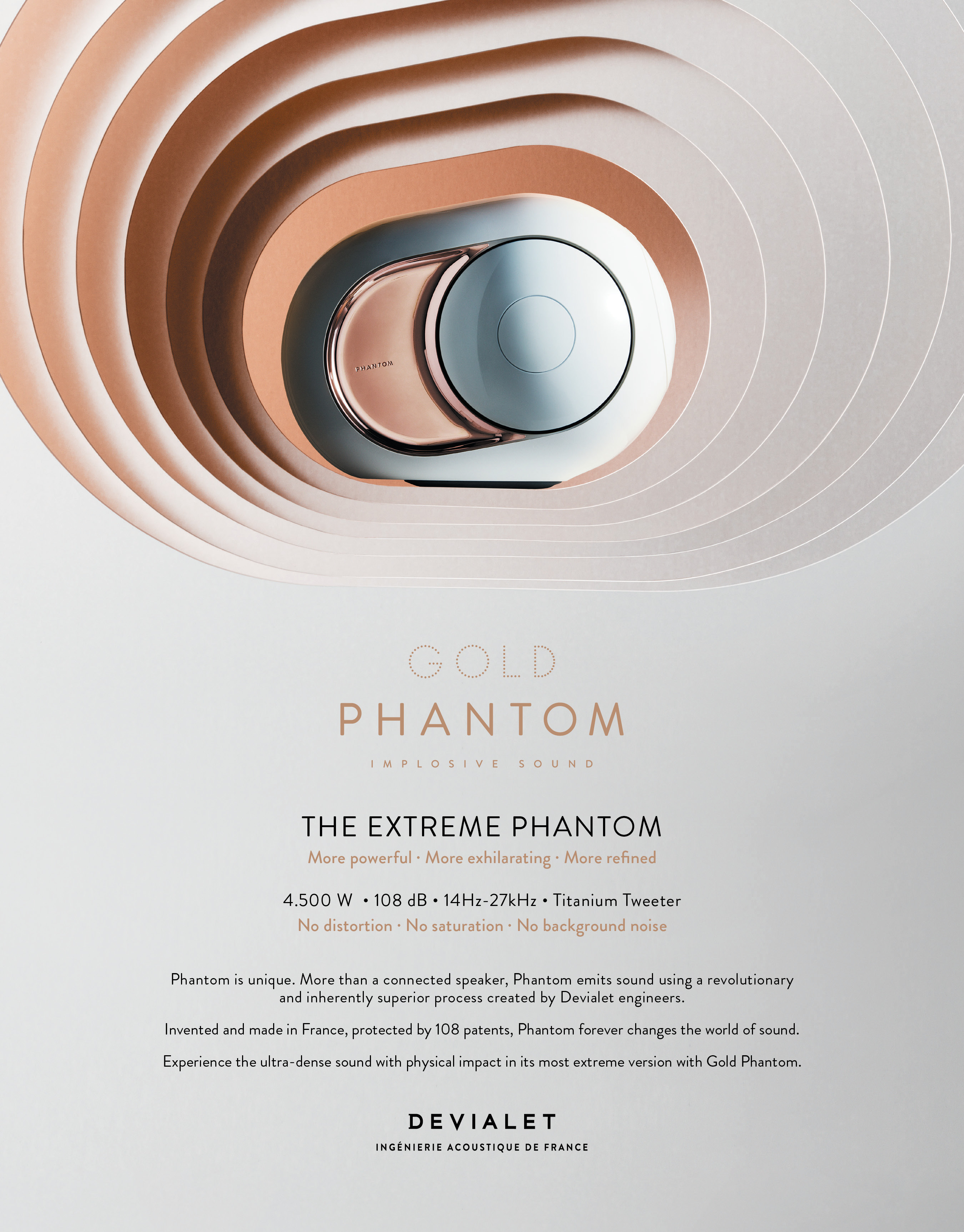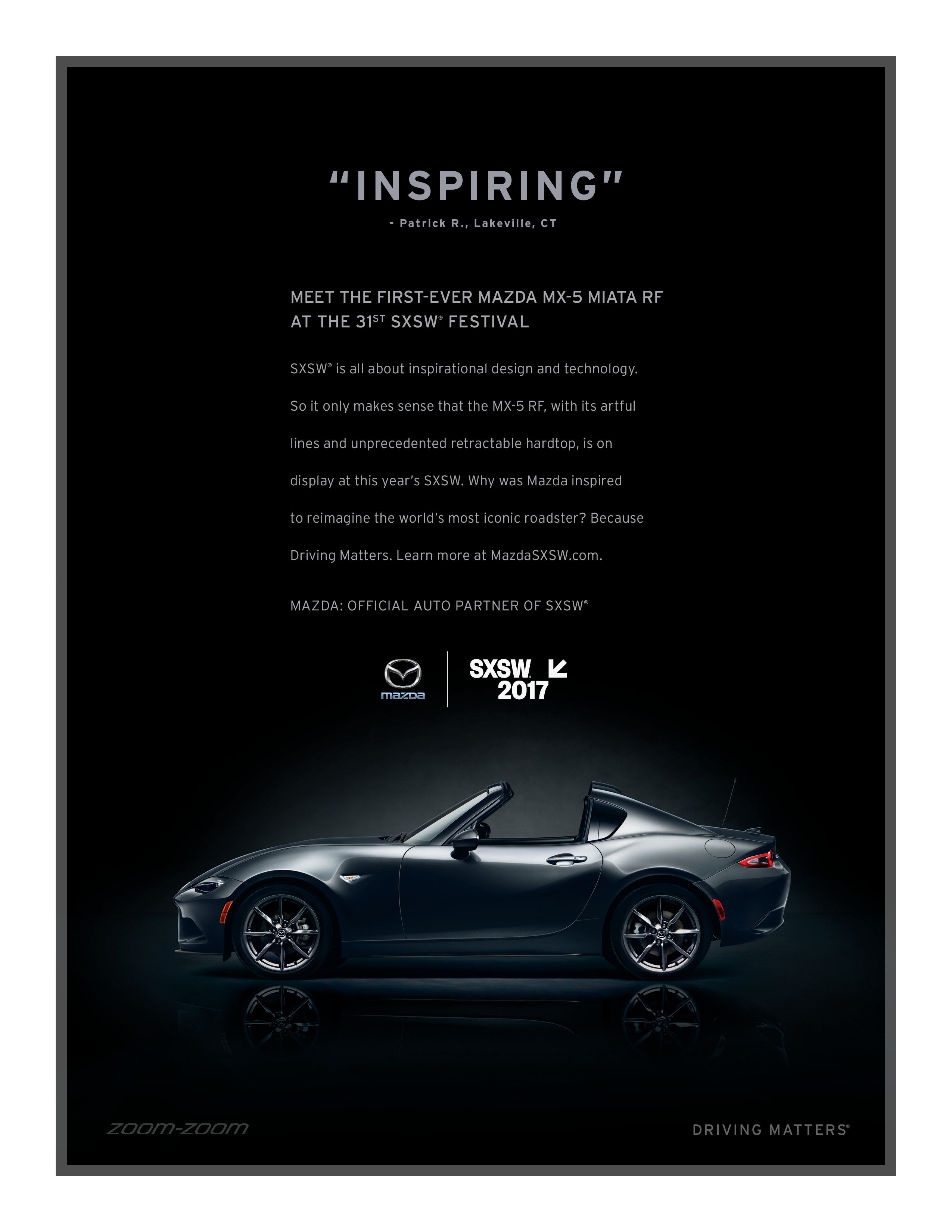

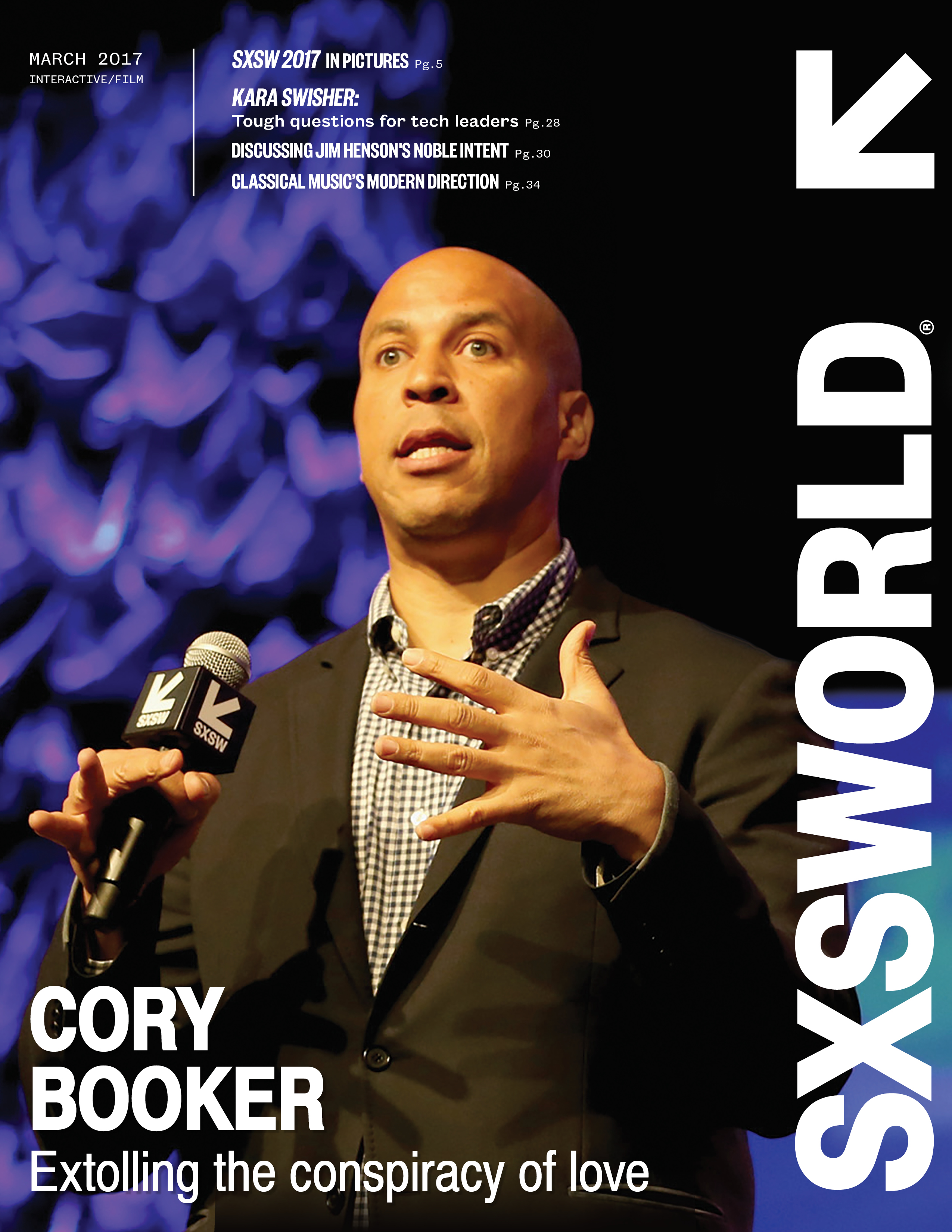

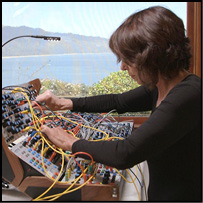
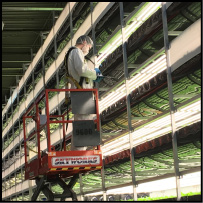
Page 34
Page 42
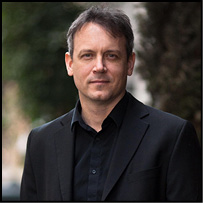
Page 36
Photo by Tyler Curtis

Volume 11, Issue 3
Publishers
Roland Swenson, Nick Barbaro, Louis Black
Editor
Andy Smith
Art Director
Eleanor B. Rosaire Pousson
Advertising
Katharyn Howe, Una Johnston,
Katie King, Mirko Whitfield,
SXSW Contributors
Jody Arlington, Estevan Aviles, Justin Bankston, Jann Baskett, Amy Braband, Michael Brown, Rory Burbeck, Soledad Cantu, Hugh Forrest, Shelley Hiam, Zach Horn, Jim Kolmar, John Krause, April Litz, Andrew McNeill, Leeann Pendley, Janet Pierson, Cathy Ricks, Mai Schotz, Amy Wanke
SXSW 2017 Logo Design
Foxtrot
Contributors
Shermakaye Bass, Dan Gentile, Britt Hayes, Jeff McCord, Doyin Oyeniyi, Scott Schinder, Jenny Smith, Dan Solomon
SXSW Headquarters
PO Box 685289, Austin TX 78768 US
Tel 512/467-7979, Fax 512/451-0754
Email: sxsw@sxsw.com
SXSW Sales & Exhibitions
MUSIC: Stacie Cline
FILM: Katharyn Howe
INTERACTIVE: Wendy Cummings, Katie King
GAMING: Justin Burnham
SALES: sxsw.com/sales
SPONSORSHIPS: Scott McNearney
SXSW Music, U.K. & Ireland
Una Johnston, 9 The Coach Yard,
Cloughjordan, Co. Tipperary IRELAND
Tel/Fax: +353 505 42570
SXSW Europe & Int'l. Business Development
Mirko Whitfield, Blaihofstrasse 4, #10, 72074
Tuebingen-Pfrondorf, GERMANY
SXSW Japan
Hiroshi Asada, #406 2-3-21 Kabukicho
Shinjuku-ku Tokyo 160-0021
SXSW Australia, New Zealand & Hawaii
Phil Tripp, 60 King St., Coffs Harbour
NSW 2450 Australia, +61 (2) 6652 6675
SXSW Brazil
Tracy Mann
SXSW Central, South America & Caribbean
Peter Lewis
SXSWORLD (ISSN 1935-1496) is published by SXSW, LLC. five times per year in May, November, and twice in March at 400 Bowie St, Austin, TX 78703. © 2017 SXSW, LLC. All Rights Reserved. Periodicals postage paid in Austin, TX and at additional mailing offices. “SXSW” and “South By Southwest” are registered trademarks owned by SXSW, LLC. Subscriptions are provided annually with paid registrations to the SXSW Conferences. Email for inquiries
POSTMASTER: Send address changes to
SXSWORLD PO Box 685289, Austin TX 78768
IN EVERY ISSUE
SXSW Gaming’s international appeal
Updates from the SXSW family of events
A Look Back: Christopher Emdin
SXSWedu keynote on teaching and hip-hop
Features
SXSW 2017 in pictures
Veteran tech journalist joins Interactive Hall of Fame
Creators share secrets and memories in new documentary
Ibtihaj Muhammad & Shireen Ahmed
Muslim women athletes re-shaping the narrative
Classical music innovators taking bold steps forward
Three World Premiere docs explore current events and issues
Making the case for humanist business strategies
U.K. acts bringing new energy to legendary art form
Local farms, land use issues and some innovative solutions
Photo by Sean Hellfritsch
SXSWORLD | March 2017 Interactive/Film | SXSW.com
Contents
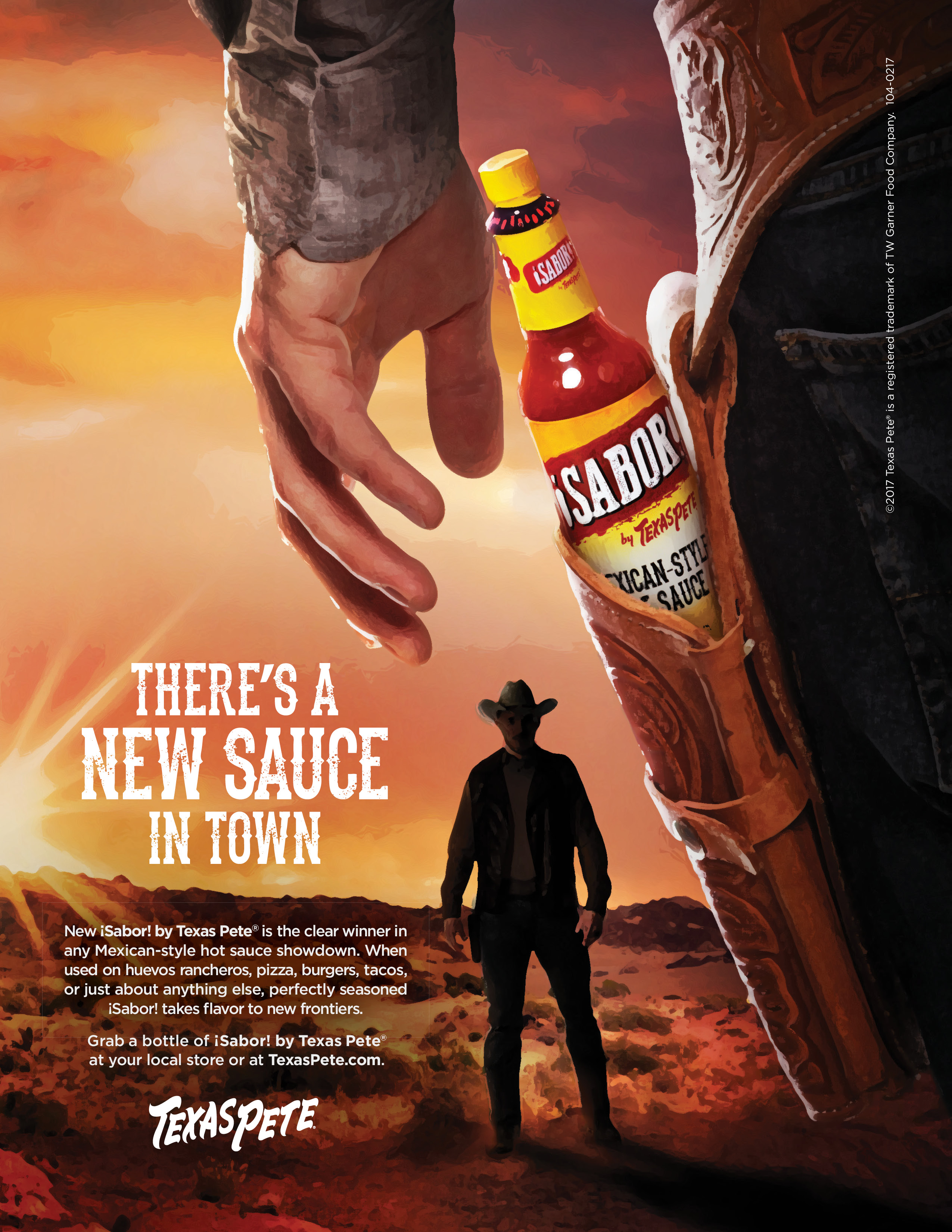



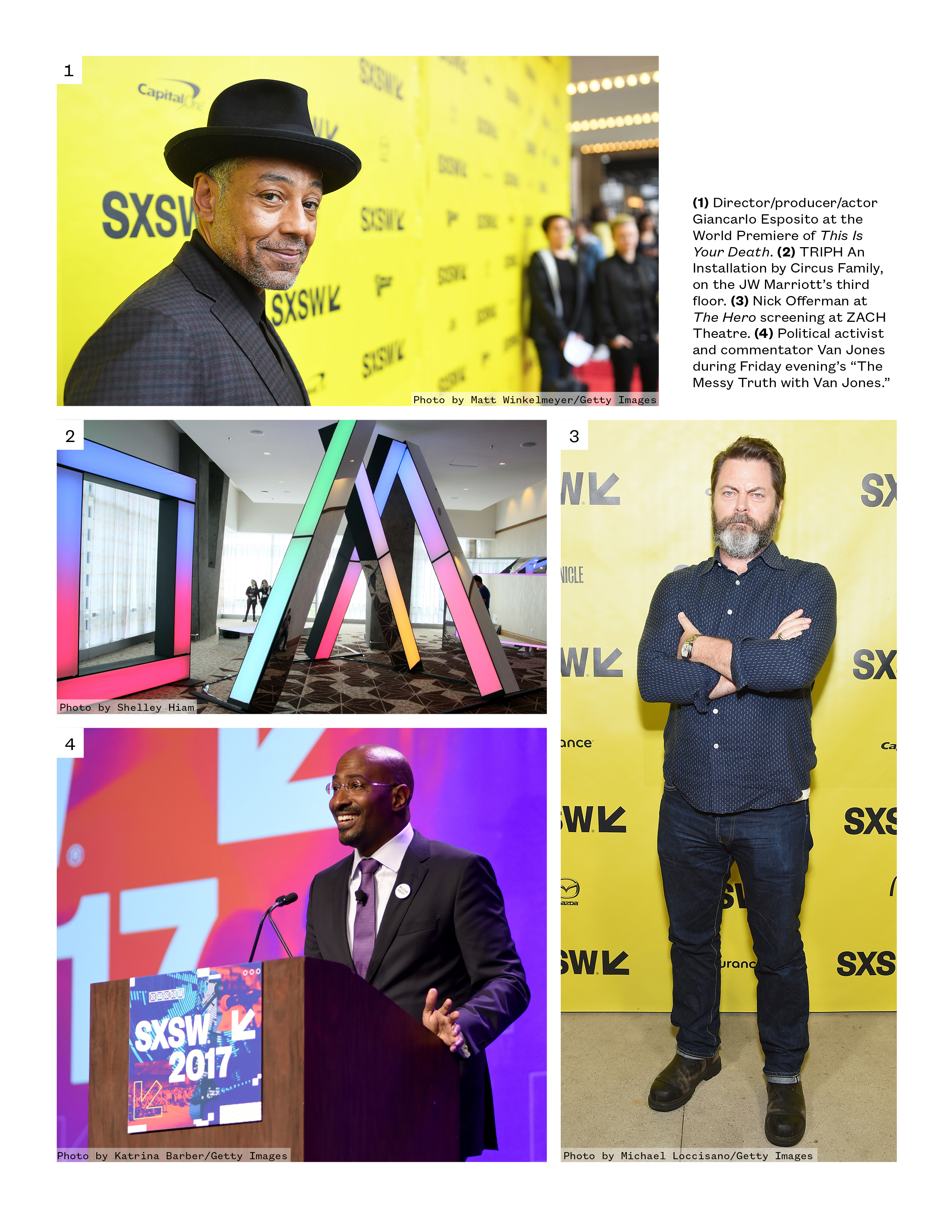
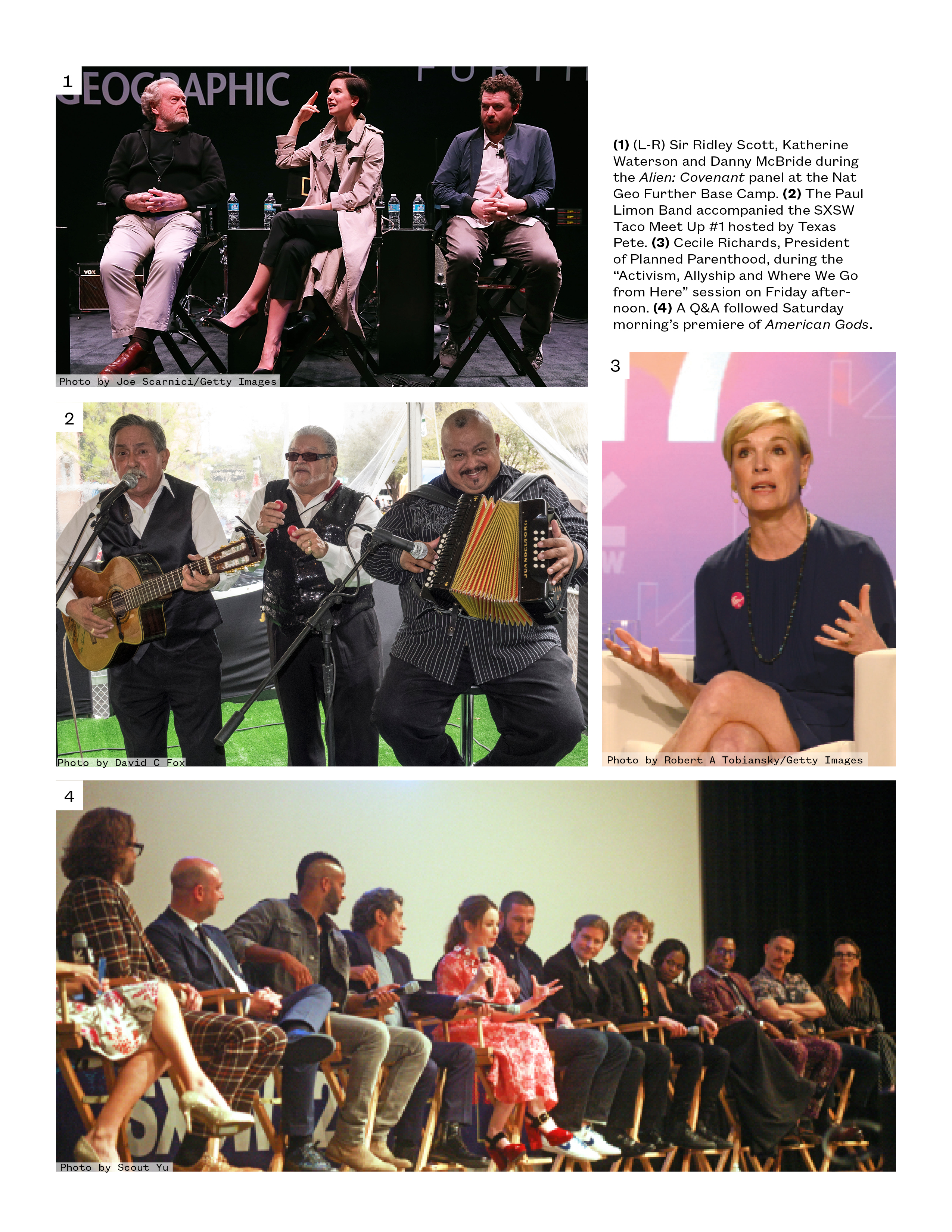
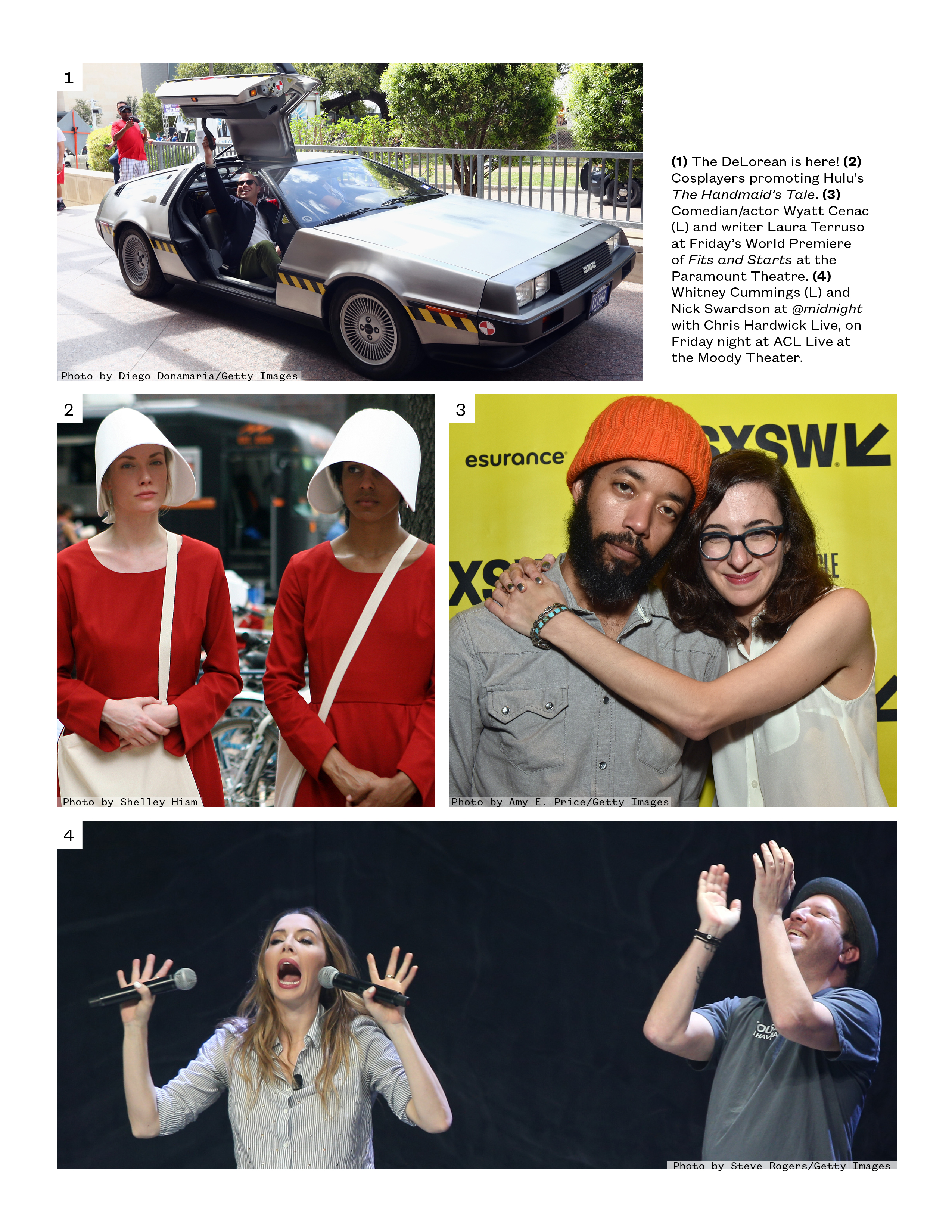
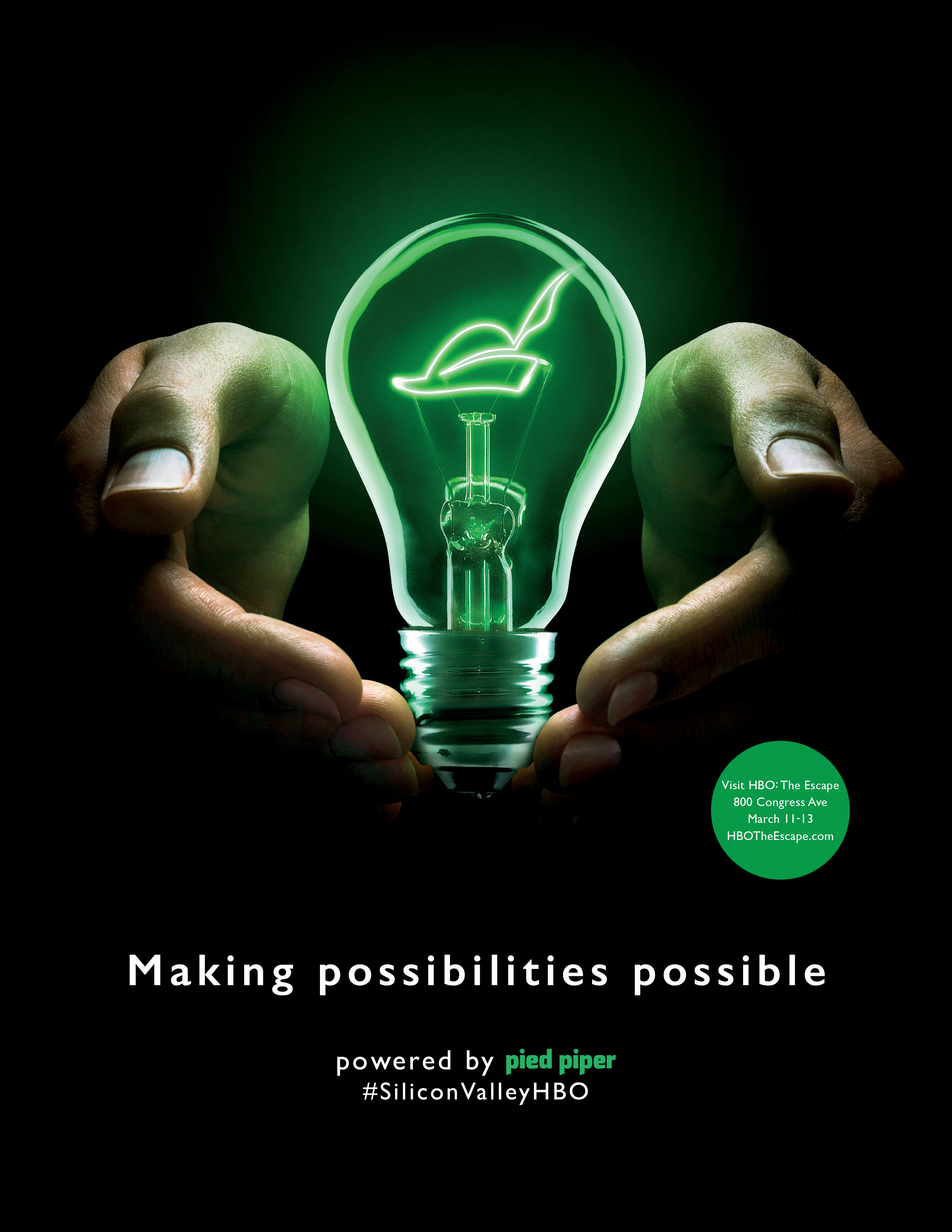


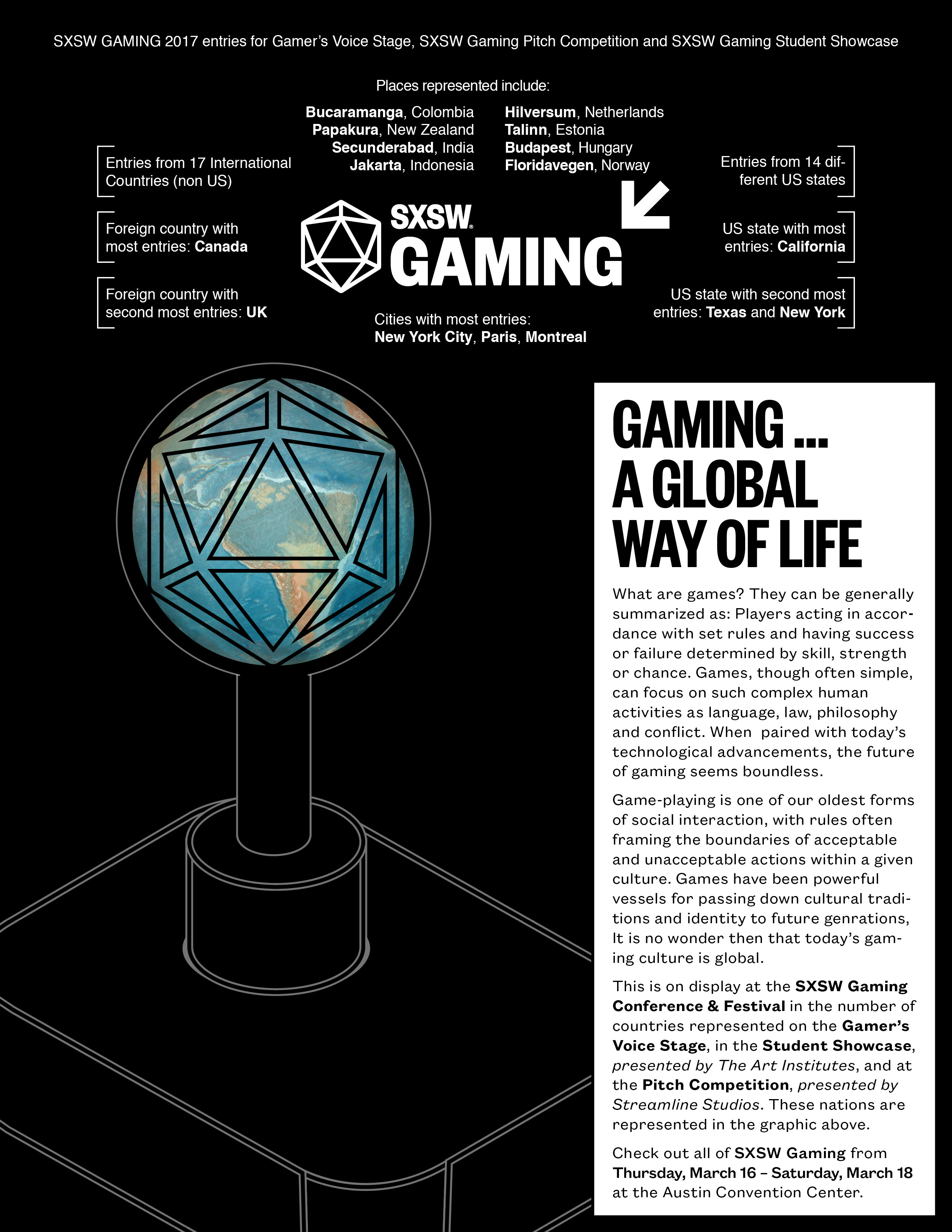
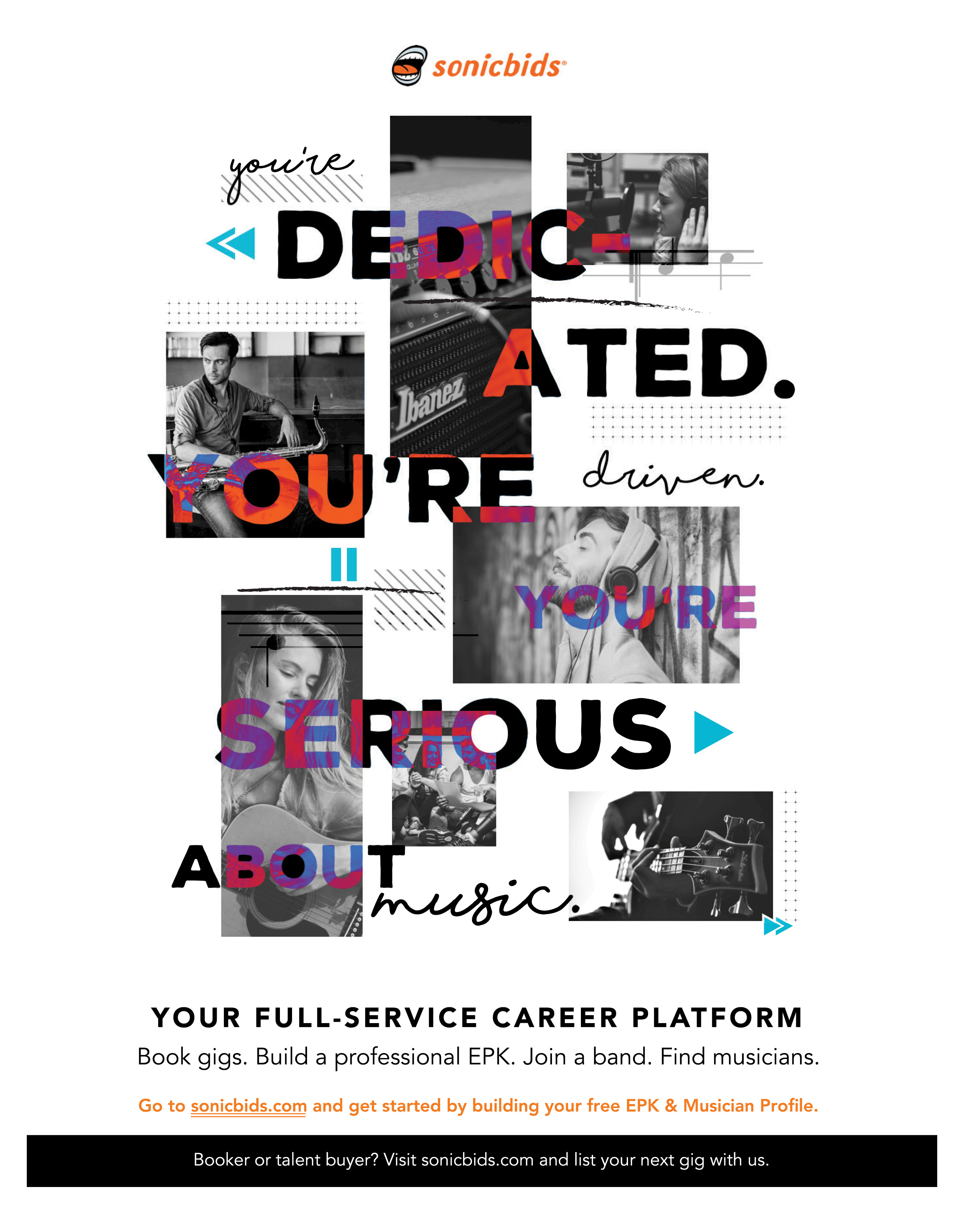


Interactive
Innovation Awards
Finalist Showcase
Today (Sunday, March 12) from 11am to 5pm in Salon CDE of the Hilton Austin Downtown, come and discover the creative, inspirational, and ingenuitive new projects in the Interactive Innovation Awards at the second annual SXSW Interactive Innovation Awards Finalist Showcase.
This hands-on expo is bigger and better than ever, with double the exhibit space of the inaugural event. 65 finalists in categories like VR & AR, health & med tech, digital design and more will exhibit their entries for all SXSW badgeholders. Check out what’s new and what’s next, then cast your vote for the People’s Choice Award!
New Location for SXXpress Passes
SXXpress passes guarantee front of line access to film screenings. Platinum and Film badgeholders may reserve two passes for the current day and two for the next day, securing access for up to four films. Note that you need to arrive thirty minutes ahead of the film’s start time. Pick yours up in the new location in the Austin Convention Center 1st Floor Palazzo on Trinity and Cesar Chavez, from 9am - 4pm daily. Learn more at sxxpress.
SXSW Film Tracks
still going strong
The SXSW Film Conference continues through Wednesday, and the bulk of our convergence tracks run through Thursday. Choose from a huge range of events, including Round Tables, Workshops, Keynotes and our acclaimed Mentor Sessions. See schedule or the SXSW GO app for more.
SXSW Virtual Cinema
New for 2017, SXSW Film Festival expands its VR content with Virtual Cinema, opening Tuesday, in Salon 5 at the JW Marriott (110 E 2nd St). Look for innovative projects from industry leaders including Chris Milk’s Life Of Us, The Melody of Dust by Viacom Next and the band Hot Sugar, which is an album exclusively in VR, and Behind The Fence, a touching VR documentary by Lindsay Branham and Jonathan Olinger. Check out the schedule or the SXSW GO app for details.
SXSW Comedy
Continues All Week
SXSW Comedy’s packed daily and nightly schedule continues through Saturday. Laugh along at showcases, live podcast recordings, panels and late night parties. The diverse line-ups feature rising stars, established greats and surprise guests.
Health Pavilion
Previously known as the SX Health and MedTech Expo and now part of the SXSW Trade Show, the Health Pavilion is the place to interact with and learn about innovative technologies that are changing the face of health and healthcare. The Health Pavilion opens today (Sunday, March 12) and runs until Wednesday, March 15 at the SXSW Trade Show in the Austin Convention Center.

New & Noteworthy
What’s Happening Now & Exciting Things to Come!
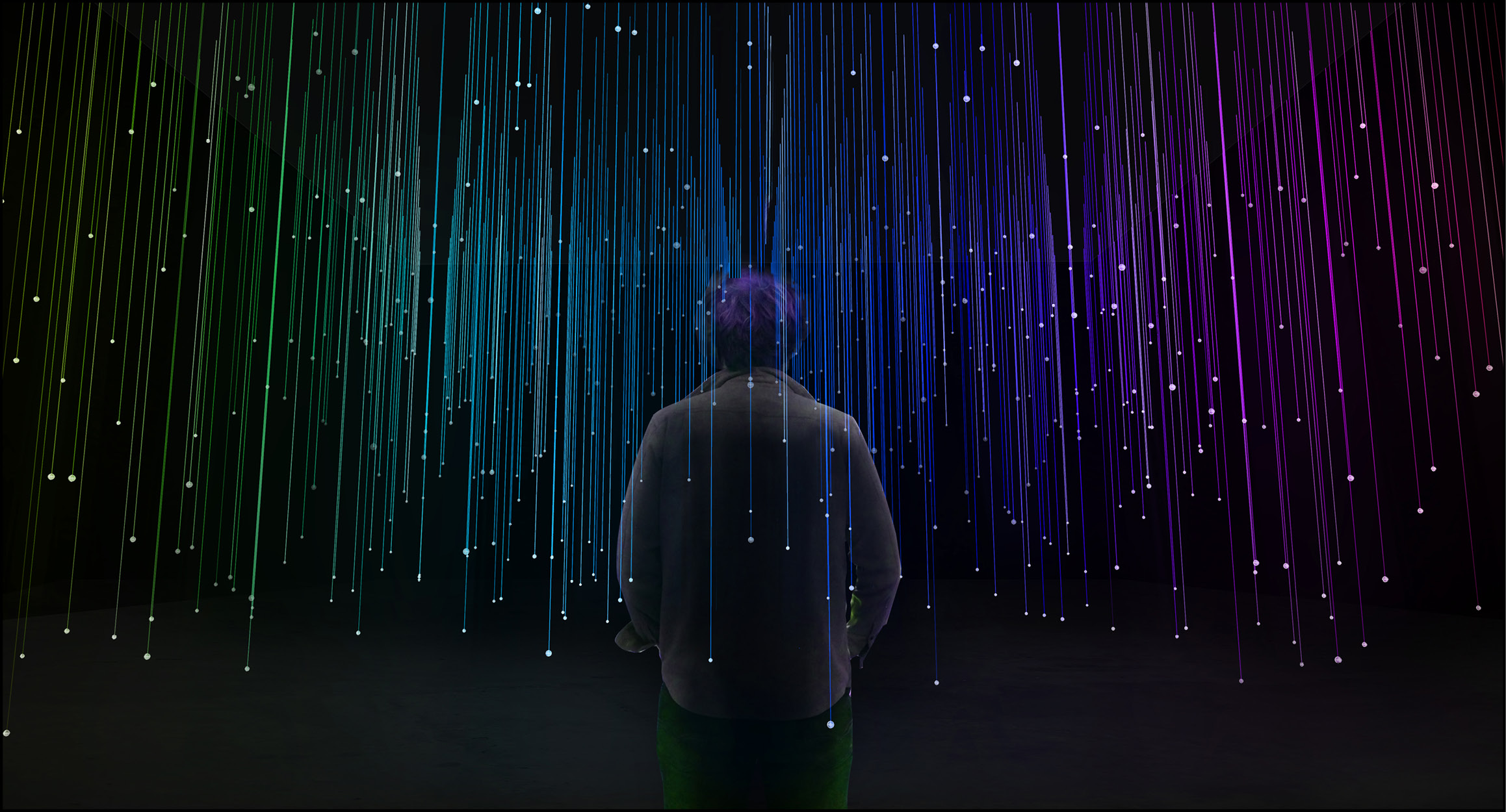
Optic Obsucra
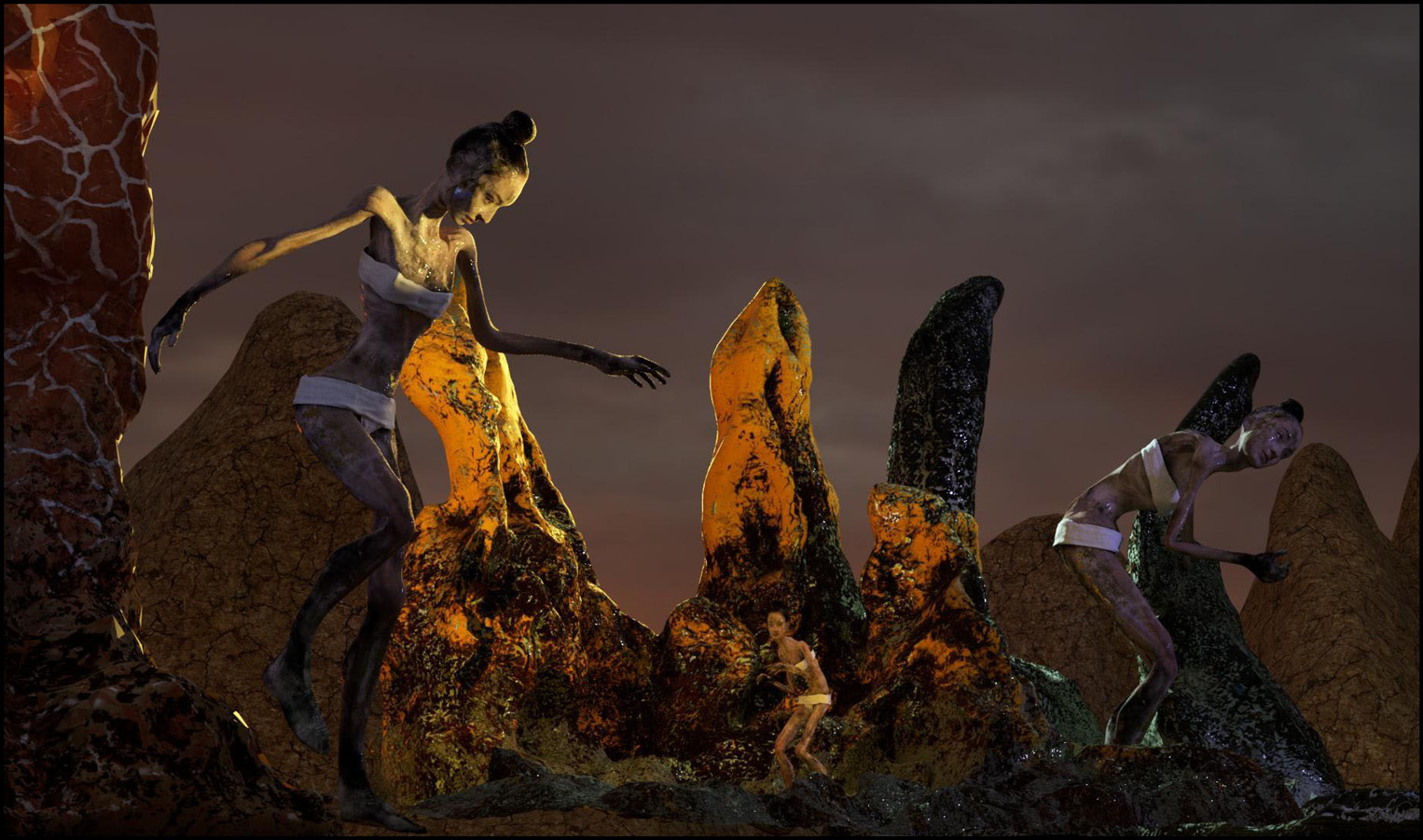
The Giant
SXSW Art Program
Visual artists have always played a role at SXSW through the filmmakers, musicians, and technologists coming to Austin each spring. In 2017, we have expanded our art initiative to deliver an experience of unexpected discovery and inspiration, bringing together diverse people, mediums, and topics. The SXSW Art Program is showcasing international artists, supporting local talent, and contributing to a vibrant culture of art in Austin through permanent and temporary installations. For additional information, visit: sxsw-art-program.


Pussy Riot
at SXSW
Pussy Riot Theatre is bringing “Revolution” to SXSW! Led by the Russian protest group’s Maria Alyokhina, Pussy Riot Theatre will debut her new play “Revolution” at the SXSW Music Festival on Wednesday, March 15 at Speakeasy (412 Congress Ave). The play is based on Alyokhina’s book detailing her personal story of Pussy Riot.
In addition, Pussy Riot’s Nadya Tolokonnikova is a Featured Speaker at the SXSW Music Conference on Thursday, at 12:30pm in Room 16AB at the Austin Convention Center.
Tech Under Trump Programming
In the wake of the November 8 election results, we created the special “Tech Under Trump” programming for the 2017 schedule. Taking place Wednesday, March 15 and Thursday, March 16, the goal of this programming is both to inform attendees about how the tech/startup ecosystem will likely change over the next four years, as well as to inspire registrants on how to bridge the many gaps and divisions that the 2016 election revealed. Confirmed speakers include: Patrick Curry (VR Austin), Anil Dash (Fog Creek), Melinda Epler (Change Catalyst), Ashish Gadnis (banquapp.com), Jeff Howe (author of Whiplash), Eli Pariser (Upworthy), Dave Pell (NextDraft), Erin Schrode (journalist and activist), Wayne Sutton (Change Catalyst), Molly Wood (Marketplace), Vikrum Aiyer (tech consultant), Daniel Costa (Economic Policy Institute), Matthew Dowd (ABC News), Ambassador Robert Holleyman, Jeffrey Joseph (Consumer Technology Association), Nika Nour (The Internet Association), Dan Rather (News and Guts Media), Laura Sallstrom (Access Partnership), Brian Stelter (CNN), Baratunde Thurston (author/pundit), and Katy Tur (NBC).
The “Tech Under Trump” programming will occur as part of the new Tech Industry Track (with expanded dates, running through Thursday). Other sessions related to various aspects of the new administration are occurring in Government, Journalism, Social Impact and Startup Village.
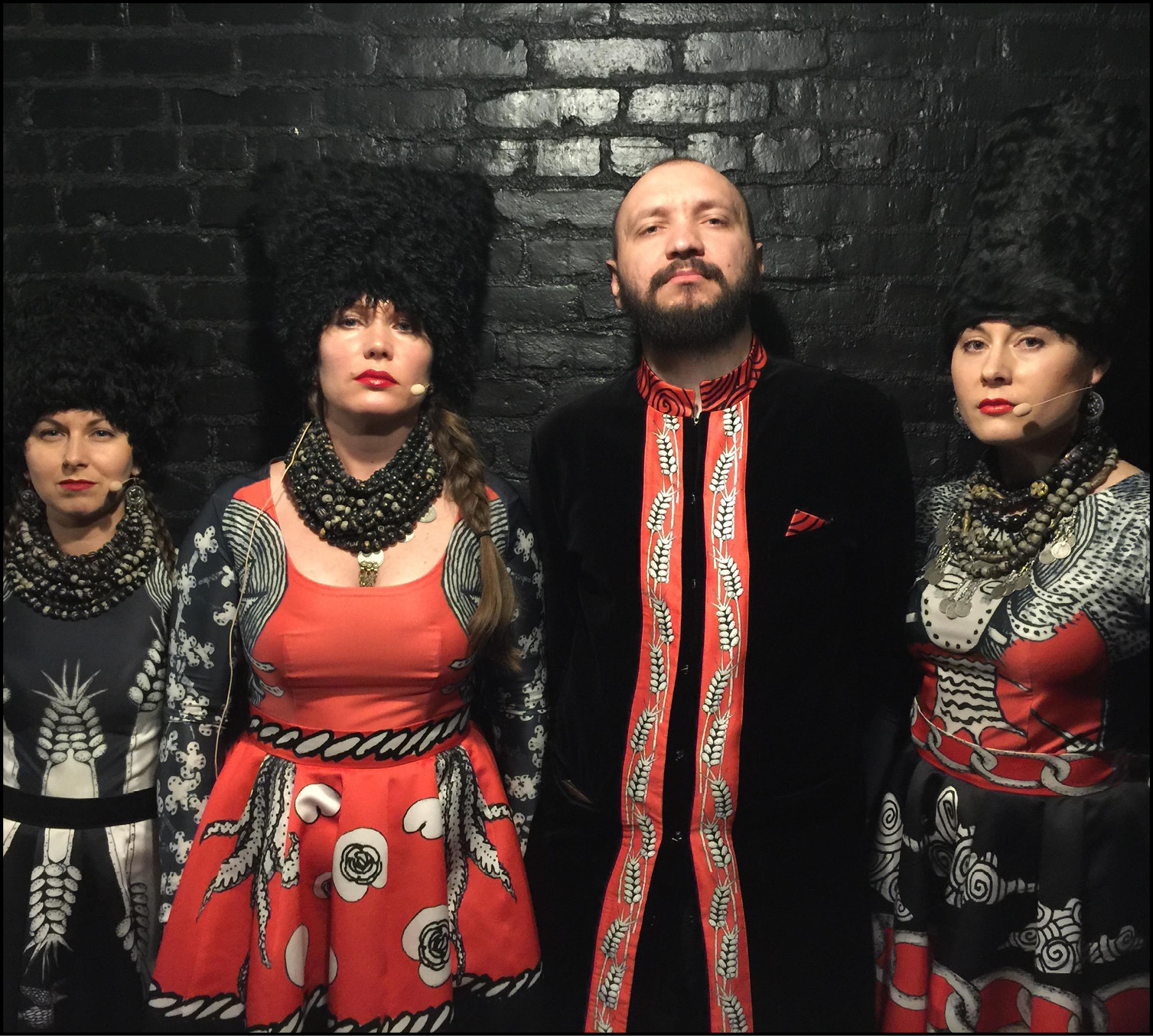
DakhaBrakha
SXSW Social Good Hub
Curated and produced by the SXSW Eco programming team, the SXSW Social Good Hub presented by Caterpillar Foundation celebrates the creatives driving social impact within the music, film, and tech industries. The Hub will be held at Techspace Austin (98 San Jacinto Blvd) today (Sunday) and tomorrow (Monday) and will feature collaborative programming exploring the future of social impact and how the incoming policy changes will shape the field. SXSW Social Good Hub is a component of the Social Impact Track, featuring panels programming at the JW Marriott through Wednesday, March 15. The Hub will also feature one-on-one meeting opportunities and various networking events which are open to all SXSW badgeholders. Find more sxsw-social-good-hub.
A Conversation
with Wagner Moura
& Alice Braga
Today (Sunday), don’t miss a special session with two of Brazil’s most recognizable actors: Golden Globe Nominee Wagner Moura (Narcos) and Alice Braga (City of God, Queen of the South). Beginning at 12:30pm in Room 16AB at the Austin Convention Center, the pair will engage in a discussion of such topics as diversity in Hollywood and their roles in U.S. television shows with Latin American protagonists.
World Music Showcases at SXSW
Year after year, the SXSW Music Festival prides itself on delivering top notch world music showcase lineups. This year, Riot Artists will present DhakaBrakha and Pussy Riot Theatre at Speakeasy (412 Congress Ave) on Wednesday; Flamingo Cantina (515 E 6th St) will host the WOMEX showcase on Thursday and a Mixologi reggae lineup on Friday. Also on Friday, PXP Fest will present its first SXSW showcase at Cedar Street Courtyard (208 W 4th St).
That’s not all! globalFEST and Digiwaxx are both returning presenters, and perennial favorites Sounds from Africa & The Caribbean is moving to The Belmont (305 W 6th St) on Saturday. Check the schedule for more info, including lists of participating artists.
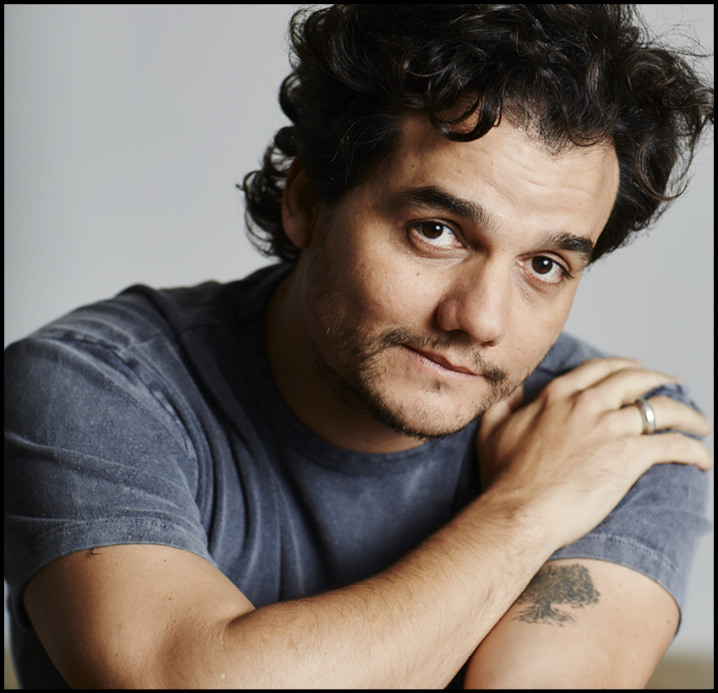
Wagner Moura
20 SXSWORLD | March 2017 Interactive/Film | SXSW.com
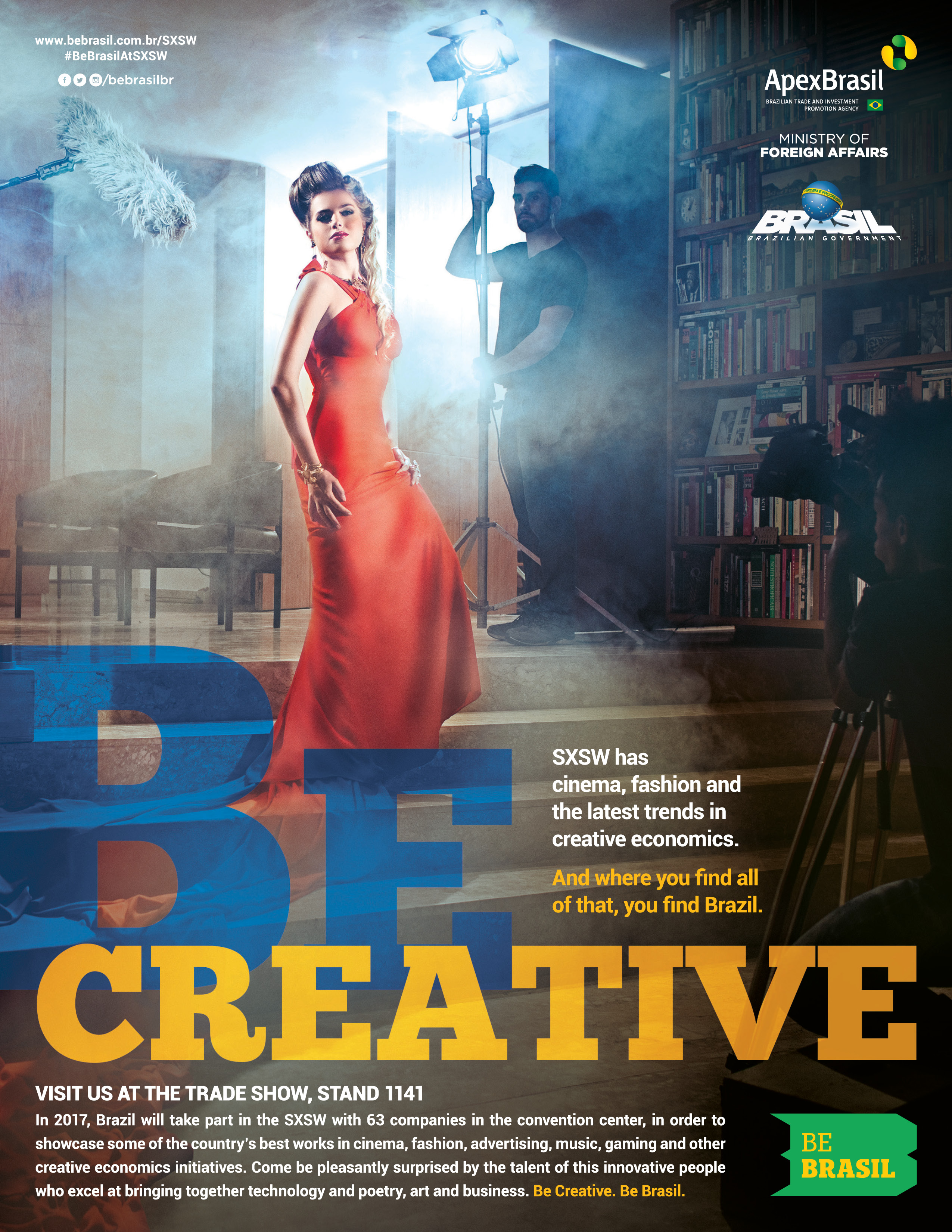
SXSWfm
Featuring SXSW
2017 Artists
Tune into SXSW’s official online radio channel, SXSWfm, for all of your official SXSW Artist listening needs. SXSWfm’s programming consists of genre specific hours, along with curated specialty shows. Through the duration of SXSW 2017, tune to hear music exclusively by SXSW 2017 Showcasing Artists 24/7. You can listen to all of our specialty shows anytime online at
mixcloud.com/SXSWfm.
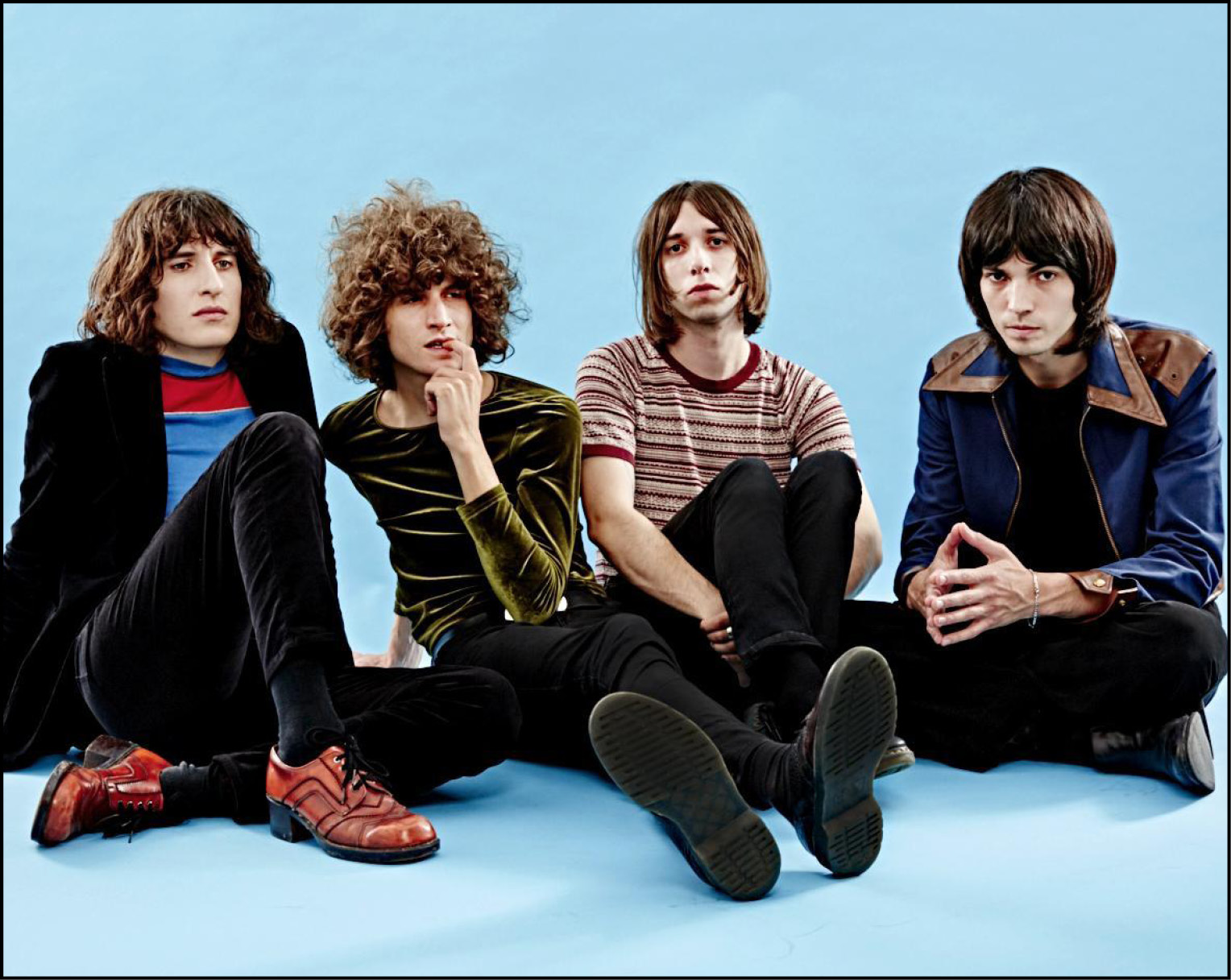
Temples, photo by Ed Miles
Radio & International Day Stages
Want to get away from the hustle and bustle of parties and still catch some daytime music? The Radio and International Day Stages return to the Austin Convention Center and are happening from Wednesday through Saturday. Radio Day Stage will be located in Ballroom D and will feature lineups presented by indie radio stations from around the US, including KEXP’s El Sonido, KCRW, KCSN, and VuHaus. The International Day Stage (in Ballroom G) will feature a diverse group of Showcasing Artists from all over the world. See schedule for the full list of artists.
Get Crafty & Make Stuff
SXSW Create, the hardware hacking and maker arm of SXSW, is at it again with more space, more fun, and even more hands-on excitement. Doing creative and revolutionary things with new technologies embodies the spirit of the SXSW conference, and nowhere is this more evident than the diverse mix of activities at SXSW Create. From 3D printing to drones to biohacking and much more, this community event showcases the disruptive solutions that are shaping our future. SXSW Create is being held at the Palmer Events Center (900 Barton Springs Rd) through today (Sunday).
Sasheer Zamata to host
SXSW Film Awards
This year’s SXSW Film Awards, Presented by Filmstruck, will be hosted by Saturday Night Live’s Sasheer Zamata. Taking place on Tuesday at the Paramount Theatre, the awards are always irreverent, entertaining and full of surprises. Don’t miss it!
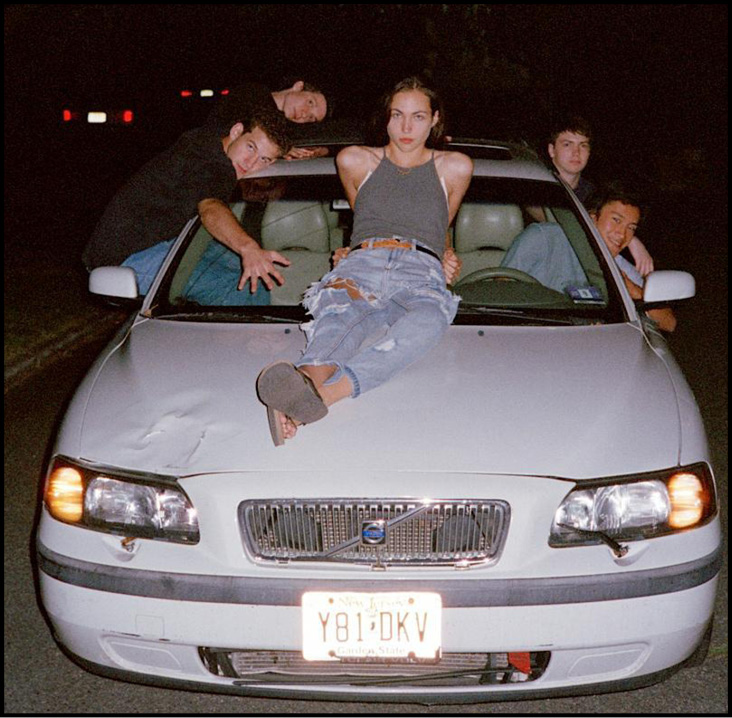
Forth Wanderers, photo
by Grace Rossi-Conaway
SXSW Film Festival Oasis at Stephen F. Austin Hotel
New for 2017, don’t miss the SXSW Film Festival Oasis Presented by Amazon Video Direct, located at the Intercontinental Stephen F. Austin hotel (701 Congress Ave). A hub for Film and Platinum badgeholders to meet, network, grab a free snack or charge their devices, the location will also host all Film Mentor Sessions and Round Tables. Find out more on the schedule or on SXSW GO.
SXSW Health Track
This year, the Health Track has moved locations, so head over to the Austin Convention Center for programming focused on innovations that build and support the ecosystem of patients, providers, payers, policy makers, designers, entrepreneurs, and investors. Topics in these health-related sessions include applying design thinking to healthcare, using big data to achieve outcomes, precision medicine, and more. The SXSW Health track runs through Tuesday. More info here health.
SXSW Super
Accelerator
Pitch Competition
New to the 2017 SXSW Accelerator Live Pitch Event, is the Super Accelerator Pitch Competition. Occurring tomorrow (Monday, March 13) at 5pm in Ballroom EFG of the Austin Convention Center, the Super Accelerator Pitch Competition highlights the top winners from each of the ten categories that were showcased at SXSW Accelerator yesterday (Saturday) and today (Sunday).
Those top ten startups return tomorrow to pitch in front of a new set of judges to determine the “best of the best” winner for the SXSW Accelerator Live Pitch Event. Judges for this event are Werner Vogels of Amazon, Stacy Feld of Johnson & Johnson, Sara Thomas Deshpande of Maven Ventures, and Bruce Haymes of Nielsen Ventures. Read about the finalists here sxsw-accelerator.
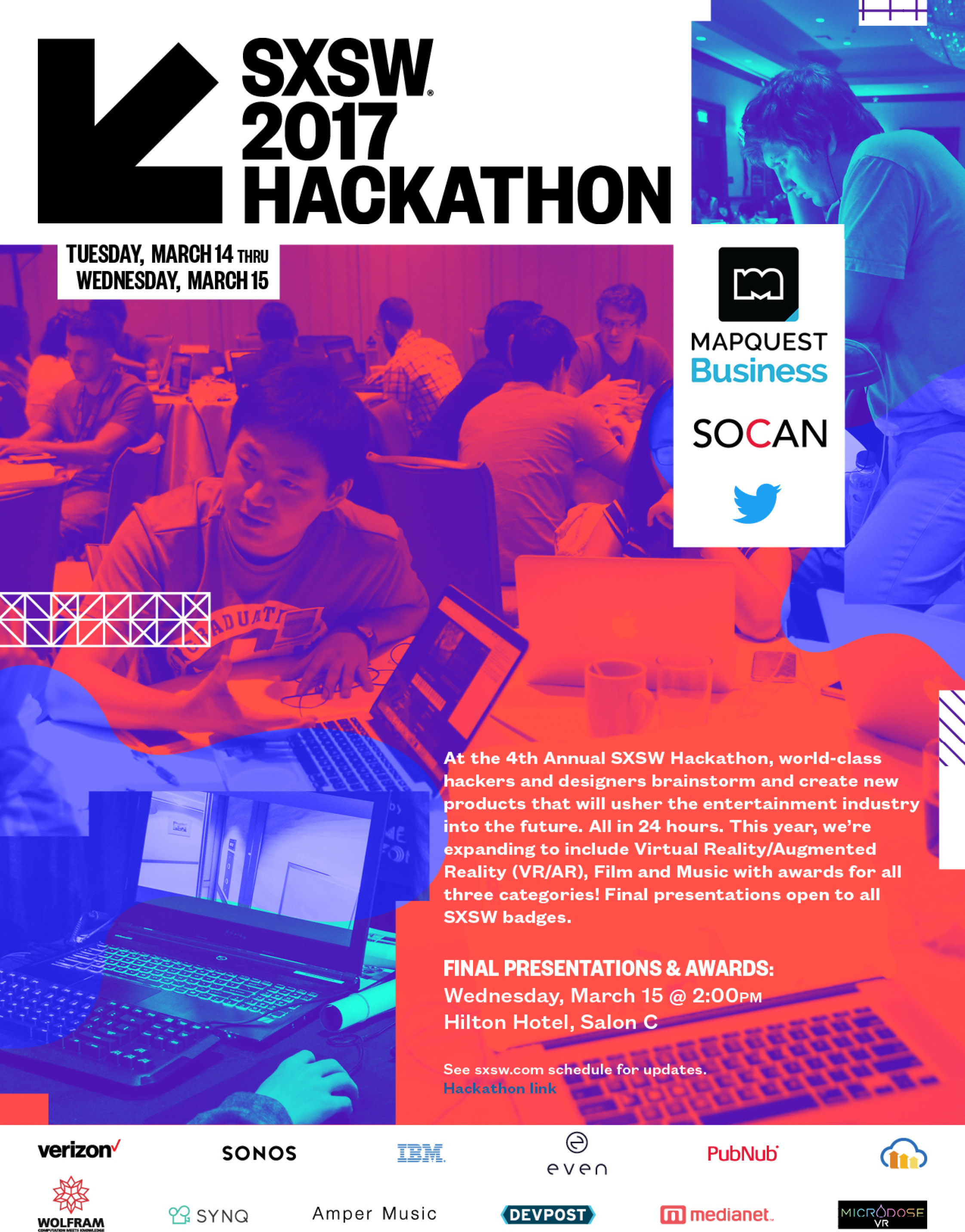
ADE at SXSW
Amsterdam Dance Event (ADE) returns to SXSW for its fourth straight year, showcasing three nights of electronic and hip-hop DJs at Plush (617 Red River St) with some of the finest Dutch talent. Quality is the only item on the menu Wednesday through Friday as ADE brings in tastemaker partners Appelsap Festival, Red Light Radio, and Dekmantel Festival, with artists such as Orpheu The Wizard, Jarreau Vandal, and Max Abysmal behind the decks. Don’t sleep!
SXSW Community
Service Awards
The SXSW Community Service Awards celebrate the spirit of community in Austin that we think is unique to SXSW. Each spring, ten recipients are recognized for their use of digital technology to help others. Each honoree receives a complimentary badge to SXSW, a $1,000 grant to their favorite 501(c)(3) and a chance to spread the word about their work to the SXSW community. The SXSW Community Service Awards Ceremony will be held tomorrow (Monday, March 13) at 6pm in the Riverside Ballroom at the Radisson Austin Downtown. Read about the nominees here.
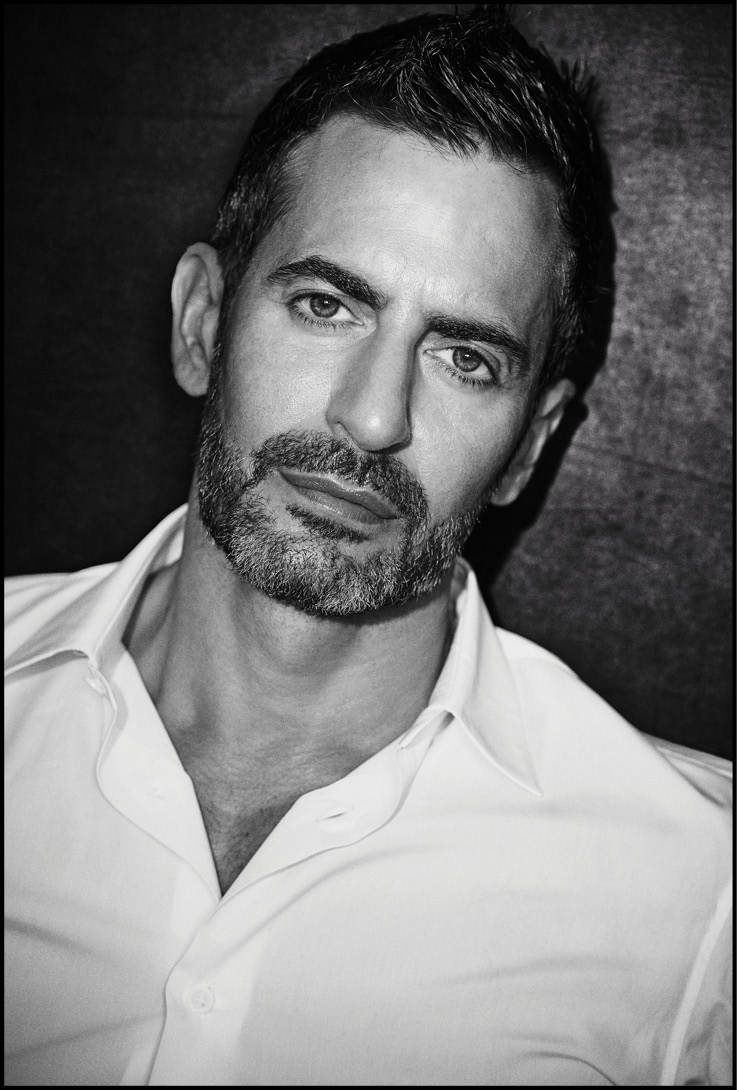
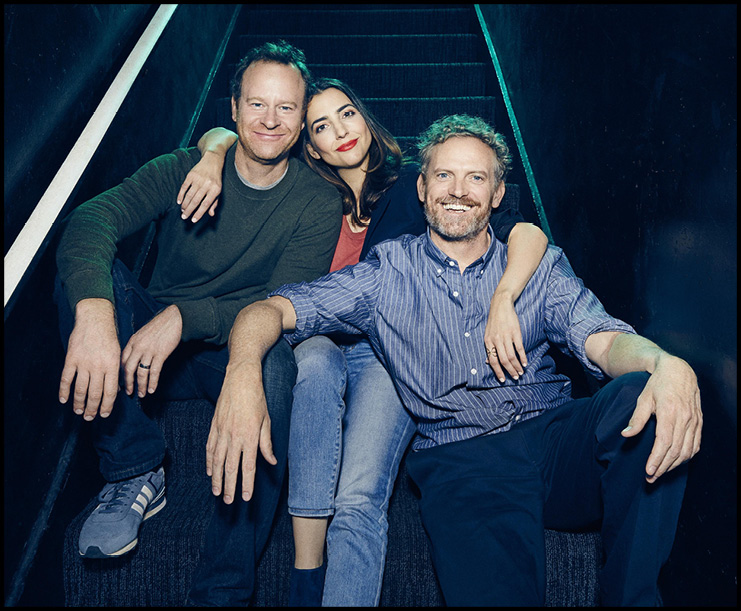
Marc Jacobs, photo by Peter Lindbergh
Nobodies
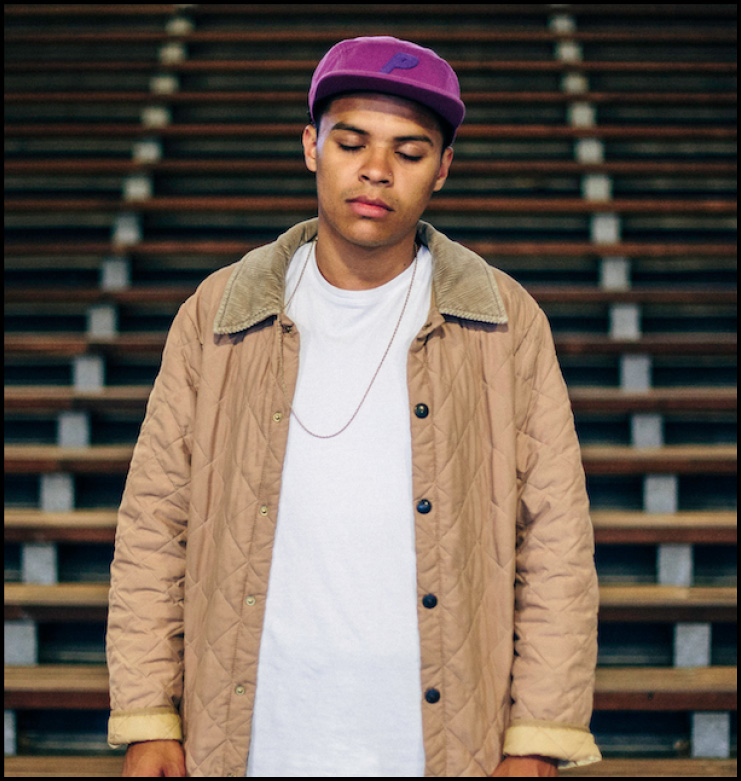
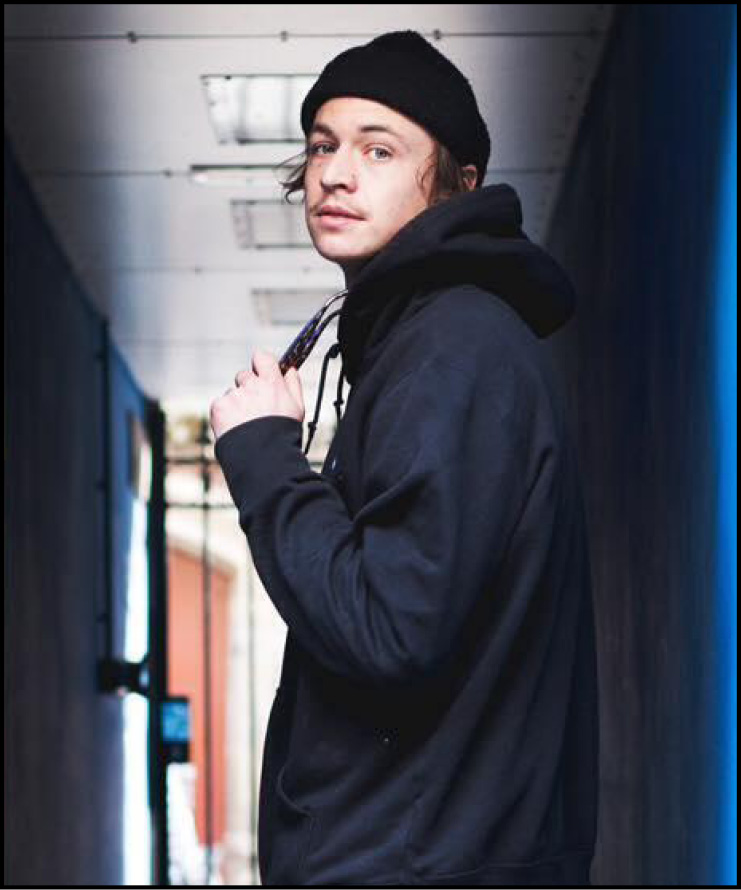
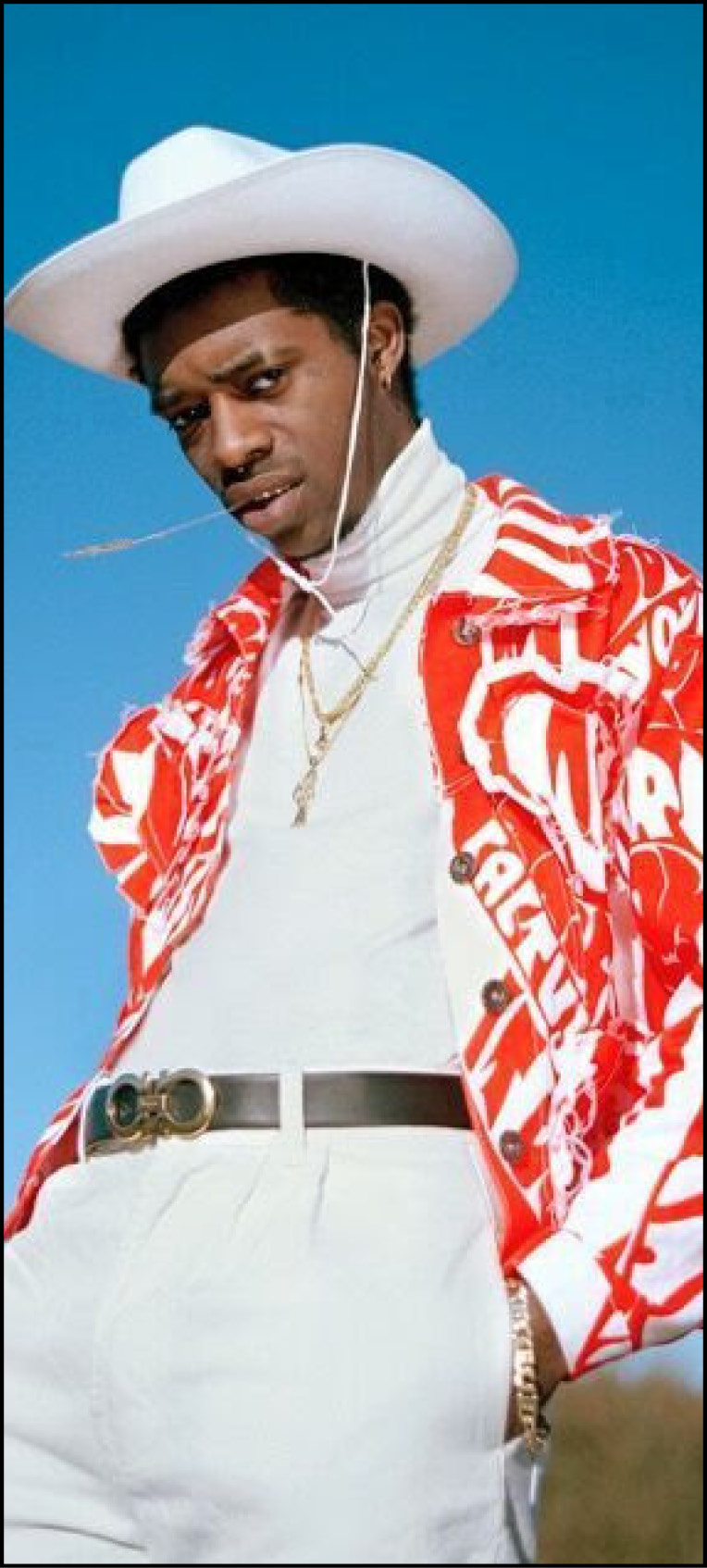
Jarreau Vandal
Max Abysmal
Mairo Nawaz
Featured Speaker:
Marc Jacobs
Marc Jacobs is one of the most celebrated and recognized fashion designers of his generation. with an uncanny ability to spot who and what is “next” in popular culture and fashion. He has also used his own image on social media and in cinema to a remarkable and often controversial effect. Tomorrow (Monday) at 11am in Ballroom D at the Austin Convention Center, Jacobs will engage in conversation with Vogue’s Creative Digital Director Sally Singer, as a part of the SXSW Style track. Jacobs will unveil what inspires him now, why he posts what he posts, and how the blurring of the lines between luxury and mass has continued to change his industry and our culture in general.
Episodic Premiere
Screenings
You can still catch Episodic screenings in the next few days, including Nobodies, from Executive Producer Melissa McCarthy, tomorrow (Monday, March 13) at 3:45pm at the ZACH Theatre (1510 Toomey Rd). Also, don’t miss The Son with Pierce Brosnan, Dear White People, I Love Bekka & Lucy and I’m Dying Up Here. See schedule or the SXSW GO app for details and times.
Music panels highlights
Music-focused conference programming ramps up with select sessions in Room 12AB of the Austin Convention Center on Tuesday, March 14. “Spotify and The New Music Economy” will pair TechCrunch’s Josh Constine with Spotify’s Chief Strategy and Content Officer Stefan Blom to discuss how streaming is impacting artists.
Join us on Wednesday as the Music Conference programming really takes over the convention center. “The Modernization of Vinyl Record Pressing” includes some of the folks who are on the forefront of the modern vinyl industry. Later in the day, “The Jazz of the Music Biz” will pair Talib Kweli, Jarret Myer and Om’Mas Keith as they discuss how jazz and avant-garde music aligns with their philosophy for music creation and the music industry as a whole.
Photo by Catharina Gerritsen

Music Bloggers Guide to SXSW
Still have some gaps in your SXSW Music Festival schedule? The Music Bloggers Guide to SXSW is back! Featuring 100 artists with previews from respected independent music bloggers throughout the industry, The Music Bloggers Guide to SXSW is our premier discovery tool for exploring up-and-coming 2017 Showcasing Artists. Check it out at bloggersguide.sxsw.com on desktop or mobile devices.
Gareth Edwards to give SXSW Film Keynote
Still fresh from his success with the latest addition to the Star Wars universe, Rogue One, director Gareth Edwards will deliver a keynote speech at SXSW. With his career leaping into hyperspace since his Monsters world premiere at SXSW 2010, this is sure to be a fascinating event. Don’t miss it, tomorrow (Monday) at 11am in Room 18ABCD of the Austin Convention Center.
Marginal Gains and Design
On Tuesday in Salon H at the JW Marriott (110 E. 2nd St), join ex-professional cyclist and Critical Mass CCO Conor Brady and Hannah Ellis-Petersen, culture editor from The Guardian, for “How Marginal Gains is turning ‘Good’ to Gold” in which the two will discuss how the philosophy of marginal gains (small incremental improvements over a period of time) is beginning to impact education and design. The talk is part of SXSW’s Interactive’s Design track. See SXSW GO app for more details.
How to attend SXSW screenings
+ Venue Status Boards
Learn about our access procedures here, but pay particular attention to our Venue Status Boards, They’re a great way to help determine whether a venue has seats available:
GREEN means GO! - Lots of seats left
YELLOW means HURRY! - It’s filling up fast, so hustle.
RED means FULL! - No need to try this one, it’s sold out.
Find it at vsb.sxsw.com or on the SXSW GO App.
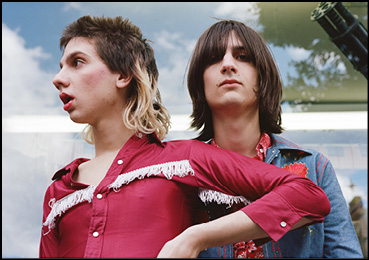
Lemon Twigs, photo by Autumn de Wilde

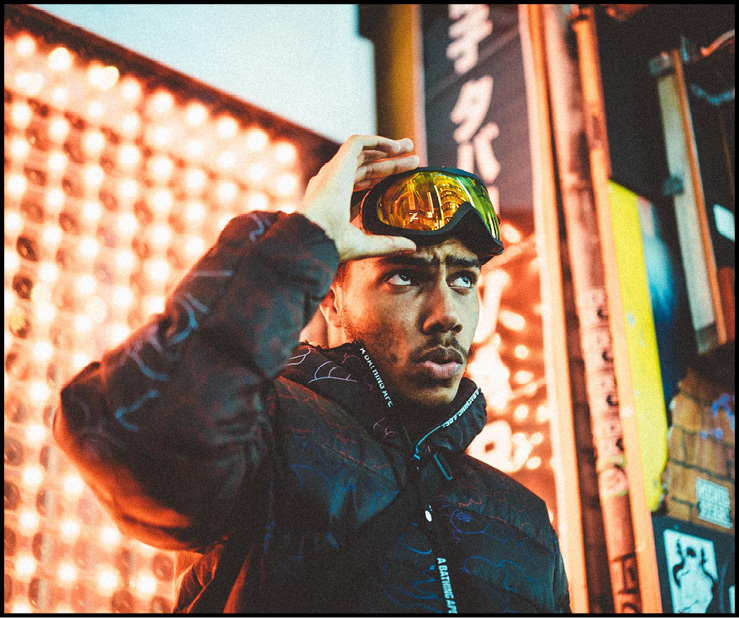
AJ Tracey, photo by Jun Yokoyama
Music Opening Party
Kick off the 2017 SXSW Music Festival at Maggie Mae’s on Tuesday. The SXSW Music Opening Party sponsored by Sensu Music, begins at 6pm and will include performances by !!!, Marie Davidson, The Lemon Twigs, Tredaci Bacci, and Noname. The party will be open to Music and Platinum badgeholders, as well as Showcasing Artist wristbands.
Journalism Track
In the context of the Trump Administration’s heated attacks
on the media, it bears repeating that SXSW has added a Journalism track to the 2017 event. Running through Thursday, March 16, this track is part of our Convergence initiative – meaning that it is open to all SXSW badge types. Some especially relevant and timely programming to check out includes “How Bots Are Automating Fact-Checking,” “Echo Chambers: Healing Our Social Media Algorithms,” “Playing Nice: Redesigning Online Commenting,” and “A Post-Truth World? Nope – We Can Fight Fake News.” Check the SXSW GO app or schedule for more details.
Photo courtesy of Garphic Stock

26 SXSWORLD | March 2017 Interactive/Film | SXSW.com

27 SXSWORLD | March 2017 Interactive/Film | SXSW.com

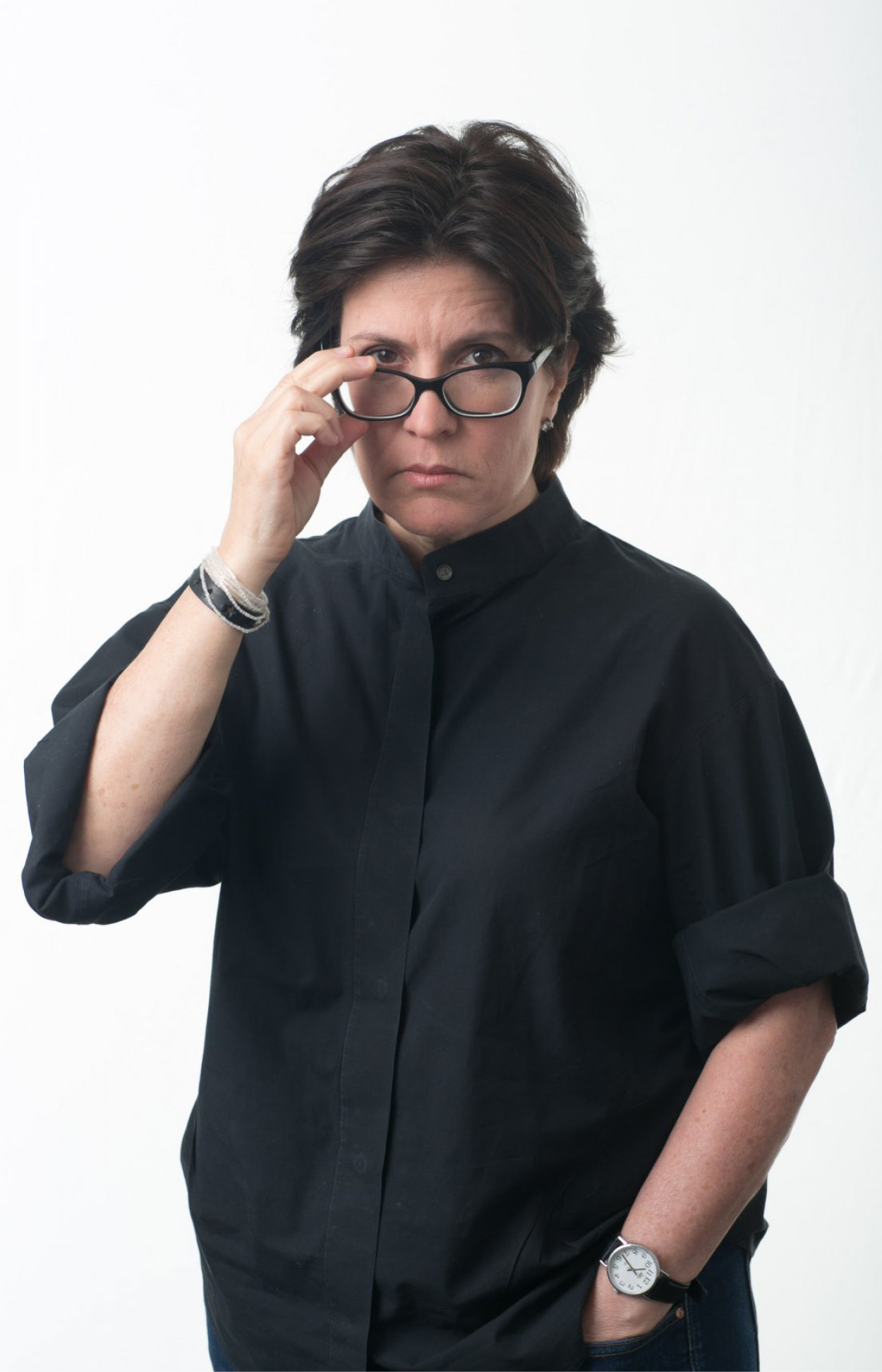
Kara Swisher
On Tuesday, Kara Swisher will be inducted as the sixth member of the SXSW Interactive Hall of Fame. The Silicon Valley reporter, who currently runs Recode after stints with AllThings D, The Wall Street Journal, and The Washington Post, is known as a tough critic of the industry she covers, and a no-nonsense journalist capable of maintaining access to leading tech figures while not compromising the integrity of her work. As she prepares to attend her “six or seventh, I don’t know, I’ve been a bunch of times” edition of SXSW, she talked about her career and the current state of tech journalism.
What parts of your career are you most proud of?
I think that I try to picture my career with doing fair and accurate journalism, but also giving insight to readers and having a point of view, so it’s not just typing stuff down about what people say. We’ve been trying, on all our sites, to give people more insight.
Second, I think that the interviews that I’ve done over the years are pretty fantastic. Everyone from Steve Jobs to Mark Zuckerberg to Sheryl Sandberg to—everybody, I’ve interviewed everybody. Elon Musk. I’ve really run the gamut of interviewing pretty much all the major figures since the beginning of the Internet.
Tech journalism is really access-based, which leads some reporters to avoid viewpoint-driven work. How do you keep that at the center of what you do?
I don’t know why they talk to me, I’ll be honest with you. Marc Andreessen said it’s because they have Stockholm syndrome, which I think is actually pretty accurate. Let’s be clear: I can call anybody anytime, and I talk to everybody, and they continue to talk to me just because I maintain that really smart people like smart questions, and they’re not offended by disagreements, necessarily.
Some Internet people, especially as they become wealthy, and nobody questions them, and they become famous, they think everything they say is a gem. And I’ve known them for a long time, so that helps. I don’t think everything they say
is a gem, and I seem to have a personality where I ask questions when they’re doing things that I think are suspect or wrong or ill-conceived, and so I think most of them appreciate that in the end, even if they don’t in the moment.
I’ve had people come back to me after, like at Yahoo!, Jerry Yang ... I was pretty tough on him, and I think I was right. But he and I go to lunch all the time, and I don’t know why. I think he appreciates the debate. I’m pretty well-informed, and pretty smart, and I’ve been following this industry for a while. And I think because I don’t have an agenda, like people who work for them do, I think they know I really do have a viewpoint that’s valuable to people, even if it’s hard on them. And I think the smart ones listen to it. I’m not always right. I’m often right. But I have a perspective they don’t. They talk only to their employees, or their friends, or their investors, and I talk to everyone, so I tend to have a wider range of opinions.
What are the problems you see in the culture of tech journalism?
First, it was fanboys. And it still is, you know, for gadgets “Oh my God! The iPhone! It has a sealed speaker system! You can drop in the toilet!” I mean, I don’t like dropping my iPhone in the toilet either, but I don’t gush over it, so to speak. So there’s a fanboy part of it, which is somewhat irritating.
Then you have the access people that just lick up anything they get, and I don’t like that at all. I think as much access as we do get, we don’t do that. A good example recently is there was speech by Peter Thiel at the National Press Club, and most people just wrote what he said and so much of what he said was so inane. They just didn’t say anything about how inane it was, or pointing out a lot of things that he was saying that were untrue. And in our piece, I did a live blog of it that was very funny ... I thought it was very funny; he probably hated it. When he said “You should take Trump seriously, not literally” like, “I’m sorry he’s saying to you to ban Muslims. I think he’s going to.” And of course he [Trump] did. A lot of things he [Thiel] said, was just—I don’t know what to call it—a lot of bullshit.
How has Silicon Valley and the tech world changed in your time covering it?
I think people are tougher. You’ve still got that sort of Washington relationship—you know, the way people in D.C. are too close. But now they’re not, and they’ve having a great time. Finally, they don’t have to get along. I think I’ve always been like that. But it’s getting better. It’s getting tougher. I think there’s more oppositional writing, which I think is good. I don’t mean to say “Be difficult,” but questioning.
Kara Swisher will be honored at the SXSW Interactive Innovation Awards, happening on Tuesday, March 14 at 6:30pm in the Grand Ballroom at the Hilton Austin Downtown (500 E 4th St).
Kara Swisher: Keeping Silicon Valley on Its Toes
By Dan Solomon


In May 1955, Sam and Friends, a live-action, puppet show consisting of five-minute segments, debuted on WRC-TV in Washington D.C. The show was created by an 18-year-old college student named Jim Henson and Jane Nebel, his future spouse. Henson called his hybrid puppet/marionette creations “Muppets,” and six decades after those humble beginnings, his Muppets are television, film and pop culture fixtures, recognized and beloved all over the world.
From TV shows such as Sesame Street and The Muppet Show, to numerous Muppet films, the beloved holiday classic Emmet Otter’s Jugband Christmas, and innovative departures such as The Dark Crystal and Labyrinth — Henson led his merry band of performers, puppet builders, writers and crew until his sudden and untimely death in 1990. Since then, the Muppets have endured with Henson’s family and numerous collaborators keeping his legacy alive; and today, Kermit the Frog and his cohorts are as familiar to new generations as they were to their grandparents. In 2013, the Henson Foundation even donated 21 Muppets to the Smithsonian’s National Museum of American History.
Frank Oz, who joined Jim and Jane Henson as a 19-year-old in 1963, has also been a key figure in the Muppet world. He created and voiced such memorable characters as Cookie Monster, Grover and Ernie for Sesame Street, which has aired continuously since 1969, as well as Miss Piggy, Fozzie Bear and Animal for The Muppet Show (which first aired in 1976) and in ensuing films. Oz also developed and performed Yoda in the Star Wars films and later directed such major movies as Little Shop of Horrors, Dirty Rotten Scoundrels, Bowfinger and Death at a Funeral.
More recently, Oz brought the Muppets and directing together in a new documentary called Muppet Guys Talking: Secrets Behind The Show The Whole World Watched. The film brings together five veteran Muppet performers (Bill Barretta, Fran Brill, Dave Goelz, the late Jerry Nelson and Oz himself) to discuss how they created their characters and share some of the stories and experiences that went along with their work.
Yet even though the five worked together for so many years (Brill and Nelson were part of the original Sesame Street team; Goelz joined in time for The Muppet Show; Baretta joined in 1991), Oz says that they had never really discussed their creative process. “It’s weird, isn’t it?” he explains. “I would have individual interviews, and they would have individual interviews, but we never before sat around talking about things. And we found out things that we didn’t know about each other, even after working together for 35 years.”
Oz says that the idea for the film came from someone outside the Muppet sphere, his wife, Victoria Labalme. “She didn’t grow up with the Muppets,” he says. “And she would be at gatherings with me and Dave and Bill and Fran and
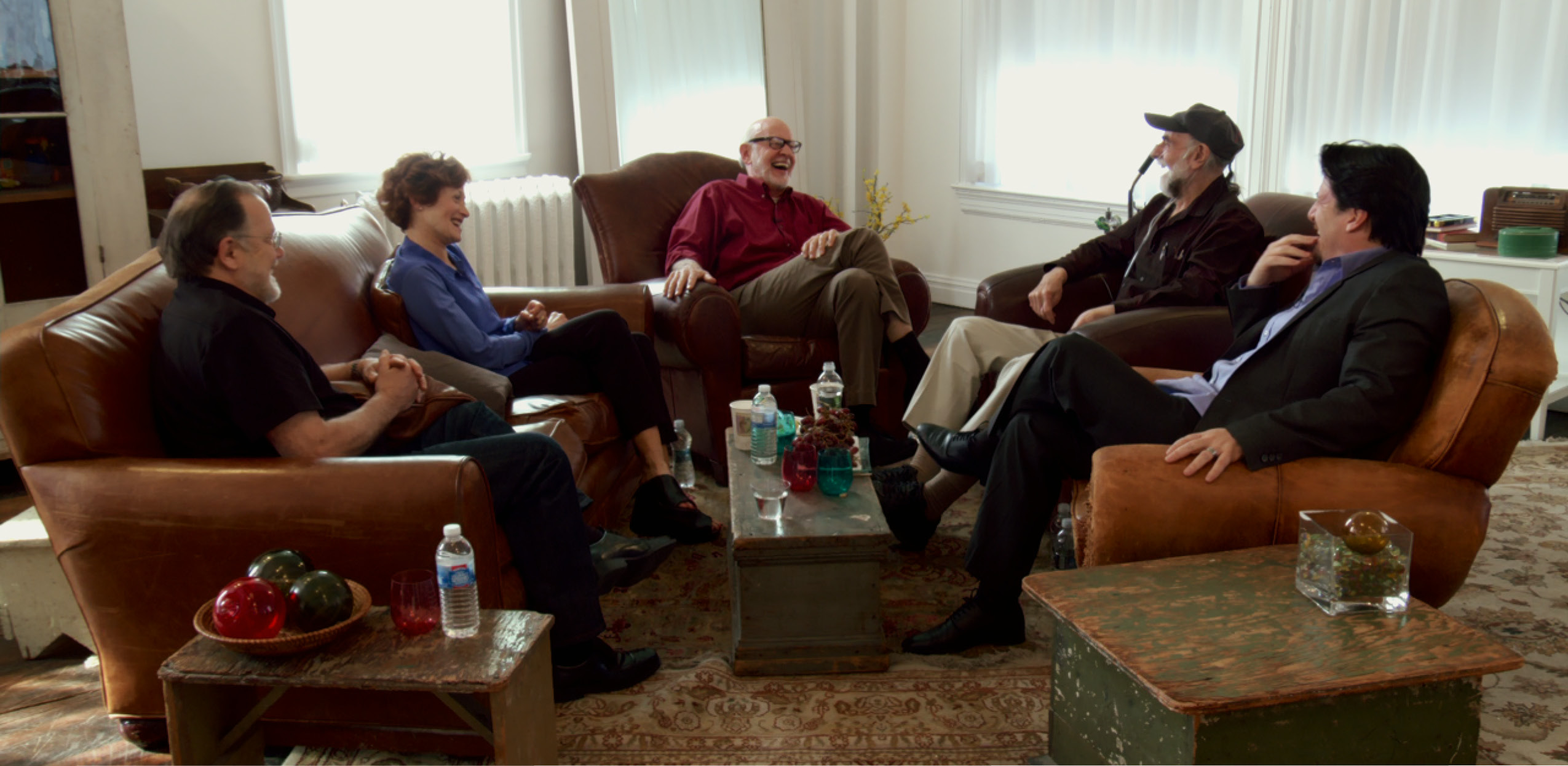
Muppet Guys Talking: (L-R) Dave Goelz, Fran Brill, Frank Oz, Jerry Nelson and Bill Barretta
Jerry, and we would have fun and tell stories. She realized that what we did was valuable, and that people would really like to hear it, so she was the one who had the idea and pushed me to do it. I didn’t think it was interesting to people because it’s just my life that I’m involved in.”
Among the many topics covered in the film’s fond and often hilarious discussion is the physical exertion required to perform. Even though it was never apparent to viewers, the sets were elevated and the performers stood underneath with their arms above their heads moving and voicing the characters while watching video monitors.
“It’s not something you can do right away. It takes many, many years,” says Oz. “You have to forget your body and think of only one thing, and that’s what’s on the screen, because you’re on the TV screen. If you’re doing it right, it becomes a Zen experience where you don’t think about anything that’s uncomfortable. But mostly it was a lot of fun and that made the work a lot more palatable.”
This element of fun is a recurring theme in the film’s discussion, and Oz emphasizes that it was the cornerstone of Henson’s creative environment: “It all stems from Jim and the kind of singular human being he was. It’s not normal for the head of a group to be supportive and collaborative and actually listen and care what everybody thinks. It’s rare to have somebody keeping things fun on purpose because he wants to have fun. It all made the work better.”
Still, Oz also was well aware that Henson’s motivation was more altruistic: “Jim always did things not just for themselves but for something above that. For instance, for Fraggle Rock, he wanted to have peace in the world. I know it sounds silly, but he truly believed that everything he did, in a non-didactic way, would hopefully help people around him, if not the entire world. He didn’t just perform. We’re really lucky ... we weren’t just a group of entertainers, we were a group of entertainers who were part of Jim’s noble intent.”
According to Oz, that noble intent continues through the film. “Jim always knew and appreciated the people who worked with him, not just the puppeteers but all the workshop people,” says Oz. “So this movie we’re doing is to express how Jim really affected us and to show that you can have a lot of fun and work really hard, as opposed to only having conflict.
“You can work in a culture that is not based on fear, that is not based on only competition, but based on affection and on loving competition. It was a rare time, but we wanted to show that that can still happen now.”
The World Premiere ofMuppet Guys Talking is today (Sunday, March 12) at the Paramount Theatre (713 Congress Ave) at 11:15am. See schedule for details, as well as information for additional screenings. Frank Oz will also sit down for a conversation with film critic Leonard Maltin on Tuesday, March 14 at 2pm in Room 18ABCD at the Austin Convention Center.
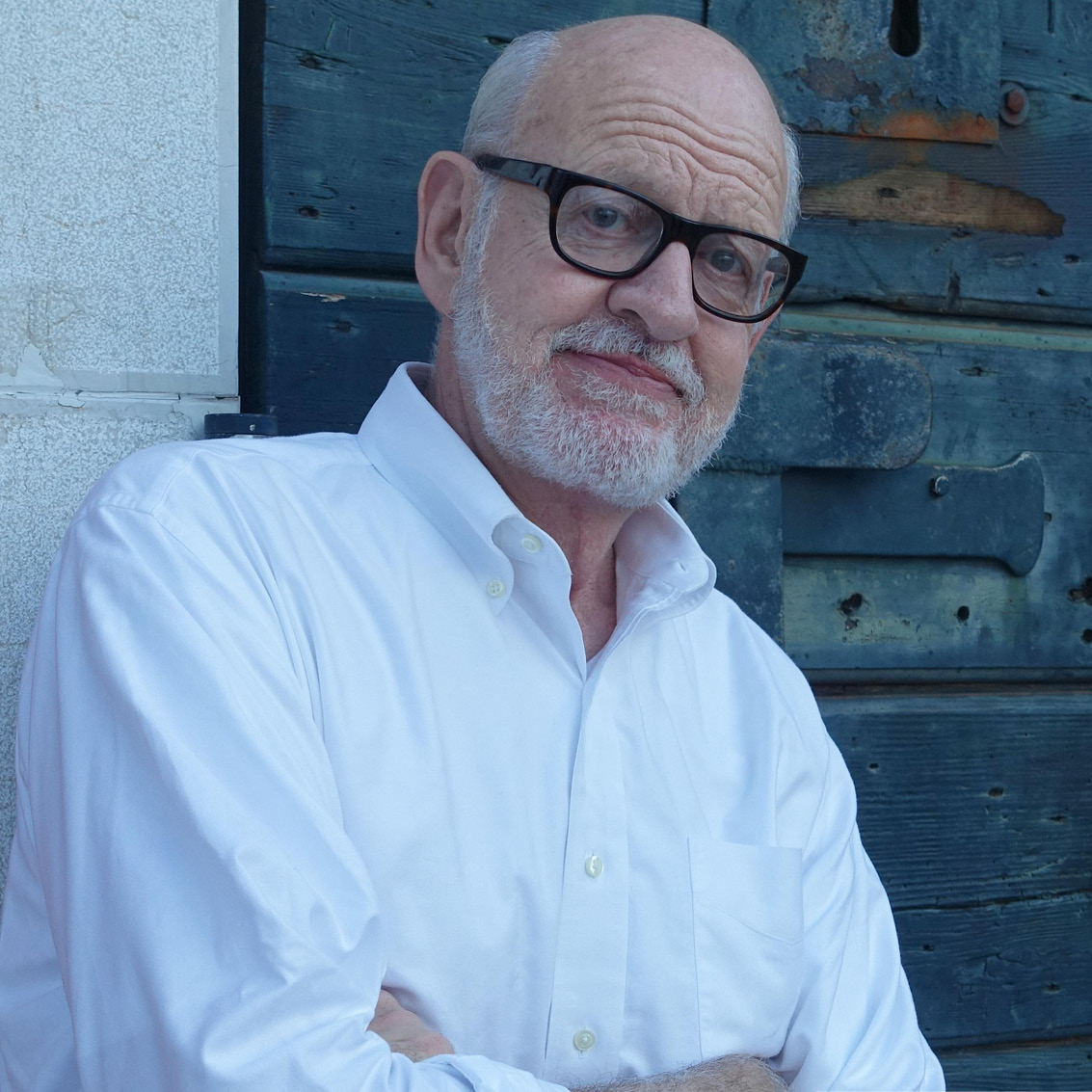
Frank Oz, photo by Victoria Labalme
It’s Time to Meet
the Muppets ...
Key Creators Convene in New Film
By Andy Smith
Muslim Women Athletes
Seek Level Playing Field
By Doyin Oyeniyi
this was happening to her, and people were horrified. Instead of having to rely on mainstream media that might not think it was relevant, you have her explaining her own situation, which is very, very powerful.”
Editor’s note: In 2016, a volunteer working at SXSW Badge Pick-Up asked Muhammad to remove her hijab for her credential photo. As a policy, SXSW does not require hijabs or other religious head coverings to be removed, and the volunteer was asked to leave as a result of the incident.
Muhammad has continued to use her prominent position to share her experiences. During the MAKERS conference in February, Muhammad revealed that she had been detained by U.S. Customs at an airport for two hours in December without explanation. Although it took place before the Trump administration’s ban restricting travel from seven Muslim-majority countries, Muhammad said her experience was one that’s common for Muslims.
“I’m very vocal and verbal about the things that happen to me, not because I want to blow the whistle, but at the same time, I want people to know that these are the common interactions that people who look like me have, and it’s not just as a public figure,” Muhammad explained at the time. “This is a common occurrence for Muslim women, especially at the airport where most of us think it’s easy to travel from one place to another, it’s not a hassle. It can be an anxious experience for someone who looks like me, especially now, to have to go to the airport. That’s not OK, and I have to speak up and speak out against it.”
Even though she is a Canadian citizen, Ahmed has also been concerned and vocal about the effects of the travel ban and any similar executive orders that may be on their way. In February, she wrote an article for Today’s Parent, highlighting her worries about possibly being detained with her 15-year-old daughter, who also plays soccer and wears a hijab, as they travel across the Canadian/U.S. border for soccer tournaments.
“As RJ and I drove toward Buffalo in the freezing rain, we had a different kind of pre-game pep talk,” Ahmed wrote. “Instead of reminding her to stay off her line, focus while in net, and only drop-kick the ball to her teammates once they were downfield, I was grilling her on her rights as a Canadian citizen.”
As the western world pays more attention to Muslim women athletes, including their lives off the court and the social and political situations they experience, Ahmed’s “hope is that stories that are being told, are being told in a fair way, are being told in a nuanced manner.”
Shireen Ahmed and Ibtihaj Muhammad are among the scheduled speakers for SXSW’s Sports programming track. See the full list of sessions on the schedule.
Shireen Ahmed has been Muslim all her life and playing soccer since she was five. But it wasn’t until she was 20, in university and decided to begin wearing the hijab that her religion and sports participation clashed. She was living in Toronto at the time (1997), and people in the area “had never seen a woman wanting to wear hijab and play before, so they had no idea what to do with it.”
Although she had been playing with the soccer club for years, and there was no formal rule that prevented playing with a hijab, the decision for whether or not Ahmed could play was left up to the referees of each game, who often decided not to allow her to participate. “I paid [club fees] and I thought I was going to suit up for 16 to 18 games,” she remembers. “And I did, but I played three of them.”
Her experience took place before FIFA officially banned head coverings in 2007 (and then overturned that decision in 2014), but it still informs her sports writing. Ahmed uses those emotions to not just report on sports news, but to also explain what certain situations feel like. Her entry into sports writing was also a way for her to correct frustrating coverage.
“It came from a space where I wasn’t happy with the way sports were being written about ... the way Muslim women in particular were being written about,” Ahmed explains.
She began with critiquing writing about Muslim athletes, for websites such as Muslimah Media Watch, an outlet that since 2007 has been analyzing the way Muslim women are portrayed in mainstream media. Ahmed says that coverage of Muslim women athletes is often voyeuristic or full of erasure. Muslim women have been playing sports for decades in Muslim majority countries, but because they aren’t as common in the western world, sometimes mainstream writers treat them as a novelties or project narratives of oppression on them.
Over time, mainstream representation of Muslim athletes has improved slightly, especially with high profile athletes such as Ibtihaj Muhammad, a fencer who, at the 2016 Summer Olympics in Rio De Janeiro, Brazil, became the first Muslim American to compete in the Olympic Games wearing a hijab. She was also the first Muslim American woman to win an Olympic medal. According to Ahmed, athletes like Muhammad have “normalized” the presence of Muslim women athletes, not just because she wears the hijab, but also because she is vocal about her experiences as a Black Muslim American, especially on social media.
“Last year Ibtihaj Muhammad was also told to take off her headscarf at SXSW, and the way it was reported was that she tweeted about it,” Ahmed said. “She let people know instantly that
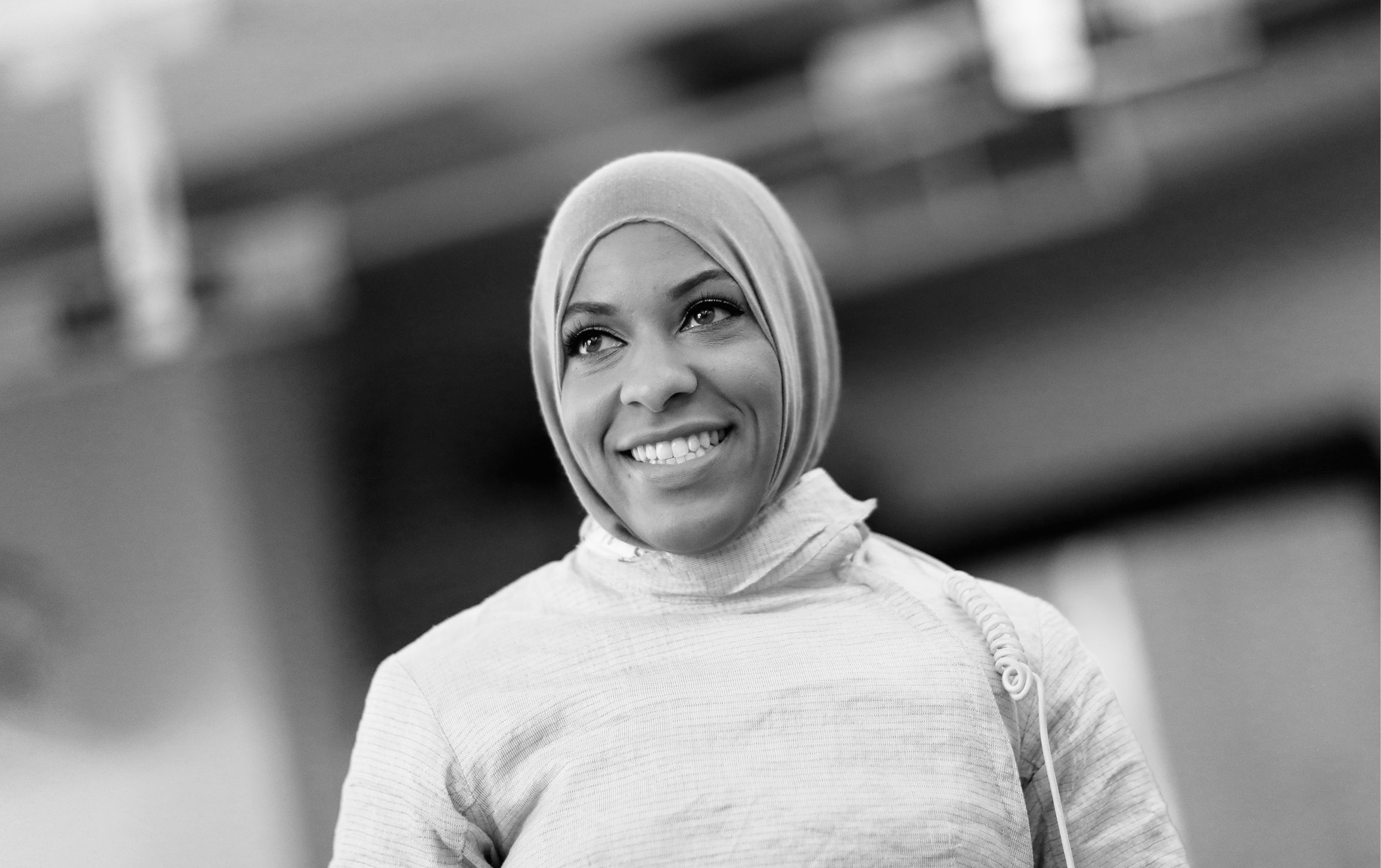
Ibtihaj Muhammad, photo by Ezra Shaw/Getty Images
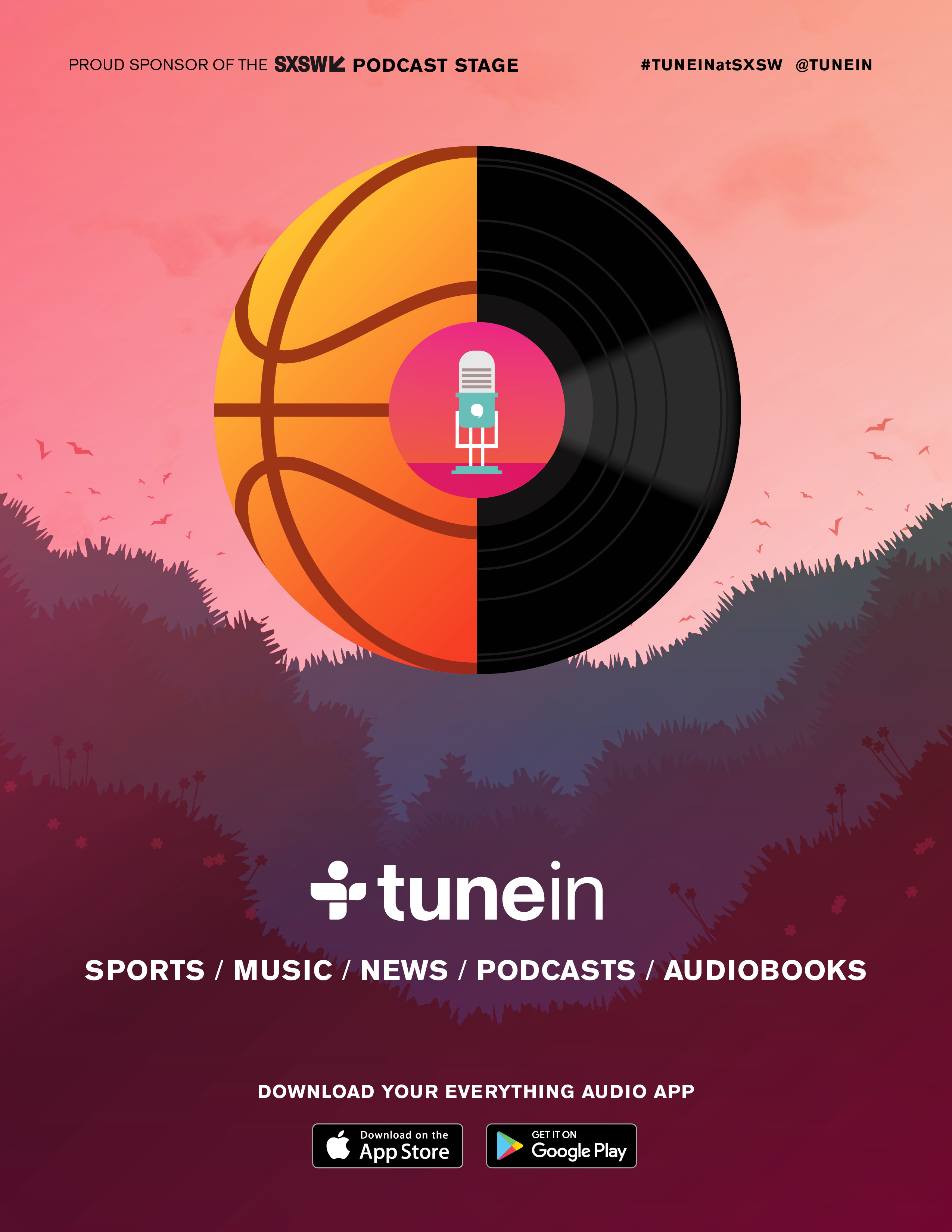
Berlin-based Italian composer and pianist Federico Albanese, whose SXSW performance will mark his first American stage performance, has won a reputation for his distinctive merging of classical, pop and ambient styles, as heard on several film soundtracks and in a variety of TV commercials.
“I think that descriptions like ‘modern classical’ or ‘neo-classical’ are fine,” Albanese says. “It might help the audience to classify instrumental music that comes from the piano, which is, by definition, a classical instrument. In my opinion, though, my music is more related to films and images rather than to the classical world. My primal sources of inspiration are paintings, poetry and films. On the other hand, we’re all children of the musical heritage of Debussy, Satie and so on, so at the end, it is classical music indeed.
“I’m looking forward to being at SXSW, and I’m happy for the chance to bring my music,” Albanese continues. “And I’m very much looking forward to being around at the festival as well, meeting people, discovering new stuff … I’m not yet sure what my showcase will be like, but it will certainly fully represent my work.”
German composer and producer Sven Helbig, who has won acclaim for his orchestral pieces, electronica and film music, reveals that his SXSW set will feature his recent choral work, I Eat the Sun and Drink the Rain. The work, which comprises a full concept album, combines electronics with a live choir (in this case, made up of Austinites), as well as Icelandic visual artist Máni M. Sigfússon.
“I guess ‘modern classical’ could describe my music,” Helbig offers. “But during the last 15 years, I have been much more into Boards of Canada, Swans, Mogwai and Godspeed You! Black Emperor, than into contemporary orchestra music. I see a growing scene of composers who get their inspiration not just from classical music.
“In my audience,” he continues, “I’ve noticed that there are many young people from the ambient, indie and electronica scenes. But there is also interest from the pure classical world. It all comes from a universal inspiration, and I like to share this. The lack of profound communication and interaction is a major problem nowadays. We don’t need more isolation. We need rich and detailed talks, face-to-face. I like to trigger that through music.”
“SXSW presents: Modern Composers” is on Wednesday, March 15, at St. David’s Episcopal Church (301 E 8th St) in both the Historic Sanctuary and Bethell Hall. Federico Albanese will also do a DJ set tomorrow (Monday) at Barracuda (611 E 7th St) at 8pm. A Life in Waves screens on Tuesday at ZACH Theatre (1510 Toomey Rd) at 6:15pm.
SXSW Music has a long history of spotlighting non-mainstream music, often from around the world. This year, the festival’s curation of unexpected and unconventional sounds includes a two-stage “Modern Composers” showcase, which will feature an eclectic assortment of nine prominent composers, representing a variety of musical disciplines.
The most enduring act on the bill is pioneering American electronic artist and keyboardist Suzanne Ciani, who will also be in town for the world premiere of filmmaker Brett Whitcomb’s documentary A Life in Waves, screening as part of SXSW Film. The film celebrates the unique four-and-a-half-decade career that has established Ciani as an influential pioneer in the world of electronic music. She also has been a force in the world of commercial jingles, creating music and sound effects for a series of high-profile ’70s ad campaigns, including Coca-Cola, Merrill Lynch, AT&T and General Electric. In the ’80s, she became a star in the burgeoning new age market, with a series of albums that combined electronics with piano and other traditional instruments.
A Life in Waves comes at a time when the veteran artist is experiencing a career rebirth sparked by her rediscovery by the vintage electronica archivists at England’s Finders Keepers label, whose reissues of Ciani’s ‘70s recordings have won her a new audience and new level of notoriety.
“The Finders Keepers thing was completely unexpected,” says Ciani. “I was a little skeptical at first, because I’d just spent 20 years performing with piano and orchestra, so I felt like I had a different identity. But in the period in which they’ve completed this film, I’ve turned back towards the technology. I had to come out from under a rock, because I wasn’t really aware that this retro revolution was going on. Now I’m starting to connect with this new electronic community, because I’ve been playing a lot and doing a lot of touring around the world.”
At SXSW, Ciani will be performing on a Buchla 200e, a descendant of the analog synthesizer that she used in much of her ’70s work. The Buchla is named after its creator, Don Buchla, a noted synthesizer designer and early Ciani mentor, whose passing was a factor in Ciani’s current return to electronic music.
“I felt some compulsion to pass on Don’s legacy, and to make the effort to go out and perform on his instrument,” Ciani notes, adding, “I don’t use a computer, I don’t use any samples or anything prerecorded. It’s a very fragile instrument, so I never really know if it’s going to work. But so far it’s traveled around the world with me a couple of times, and it’s always arrived safely.”

Modern Composers Taking Classical Music Into the Future
By Scott Schinder
Suzanne Ciani, photo by Nick Sangiamo

Three New Films Examine Challenges in the Internet Evolution
By Britt Hayes
me in them were on ‘Tube’ sites, and it was impossible to get them taken off.” Ovidie also says that “Some of the videos were from films I performed in towards the end of the ’90s,” and despite the relatively small number of copies produced at the time, “they had now suddenly resurfaced and been seen by upwards of several million people.”
Professional wrestling star Hulk Hogan experienced something similar when his now-infamous sex tape went viral and became the subject of a high-profile lawsuit against Gawker media. Whether it’s conventional or adult film (or music, or politics, or literature, or cat GIFs …), professional or otherwise, “Everything that you care about has an online component,” says Brian Knappenberger, director of Nobody Speak: Trials of the Free Press.
Knappenberger’s documentary examines Hogan’s legal battle and offers a fascinating look at the clash between personal privacy and First Amendment rights. Like Goldson and Ovidie’s docs, Nobody Speak is another perfect example of the overlap between film and interactive subjects, in which the boundaries grow blurrier every day, and the relationship is both symbiotic and, occasionally, toxic.
“There is no separation between the interactive world and every other thing that you care about,” says Knappenberger. It has become monumentally difficult to extricate ourselves from the Internet, and nearly impossible to eradicate our footprint, whether it’s a selfie or an ill-considered comment left on a blog or, as is the case in these three documentaries, a video that has been uploaded with or (often) without permission.
As independent filmmakers, the directors of these films understand that struggle more than most. And yet, as Knappenberger illustrates, this particular archival aspect of the Internet can help as much as it hinders. “To tell a story in the modern age, it’s not about just being in the presence of somebody,” he explains when asked about the concept of fair use. “It’s about understanding their activity online, their social media activity, articles that have been written about them and that they’ve responded to, and what they’ve said on various news outlets.”
“We all exist in the wheel,” Knappenberger says. “Our core selves exist now in this fractured, chaotic world of social media.” In a time when “fake news” has become a national concern, it falls to documentarians like Knappenberger, Goldson and Ovidie to sift through the chaos and hopefully bring us closer to the truth.
The World Premiere of Pornocracy is today (Sunday, March 12) at 1:30pm in the Vimeo Theater in the Austin Convention Center. The World Premiere of Kim Dotcom: Caught in the Web is tomorrow (Monday, March 13) at 12pm, also in the Vimeo Theater. Nobody Speak: Trials of the Free Press screens tonight at 9pm in Alamo Lamar A. See schedule or the SXSW GO app.
At SXSW, the Film and Interactive programs may often seem like familiar neighbors with whom you’ve exchanged mild pleasantries for years. Maybe you know their names and what they do, yet your interactions are often limited to friendly nods and passing moments based on mutual interests. But these two entities—and the creative minds that drive them and consumers that enable them —share a much deeper relationship that has become increasingly connected as the media landscape continues to expand and evolve.
This year at SXSW, three documentary films emphasize that relationship by exploring subjects that represent the grayer areas that exist within the grayest area of all ... the Internet. Topics covered in the three films: Copyright infringement, the First Amendment, and the precarious state of one of the oldest commercial industries in the world (pornography, not fishing) have all been drastically affected by the rise and seemingly infinite evolution of the Internet, a place that filmmaker Annie Goldson describes as the “wild west.”
Goldson is a professor of Media & Communication at University of Auckland in New Zealand, and the director of Kim Dotcom: Caught in the Web, a documentary that examines the legal battle between the “most wanted man online” and the U.S. government in what has been called the “largest copyright case ever.” It’s a topic that, despite the shutdown of numerous piracy sites, remains relevant, particularly for filmmakers like Goldson, who must continually find thoughtful ways to attract a (paying) audience. One way is through Kimdotcom.film, an “ambitious online companion” featuring more than 100 clips and extensive interview transcriptions that never made it into the finished film.
Still, Goldson says, “The fundamental problem remains [in] how we genuinely reward creative people for their incredibly hard work and stimulate creativity while maintaining a free and open Internet.”
That question is also of concern in Pornocracy, a documentary that examines how the Internet has been both beneficial and detrimental to the adult entertainment industry. Pornography is more accessible than ever, thanks to the advent of streaming websites, which allow people to view adult content for free—an attractive concept given the premium pricing of pornographic DVDs and magazines. Yet, while viewers may be avoiding those fees, the steep cost of that content must still be paid somewhere. “Actresses are forced to shoot increasingly hardcore scenes for less and less money and protections,” says Ovidie, the director of the film (as well as over a dozen feminist porn features).
The idea for her documentary came from the simple act of Googling herself, which led to the discovery “that certain pirated videos featuring
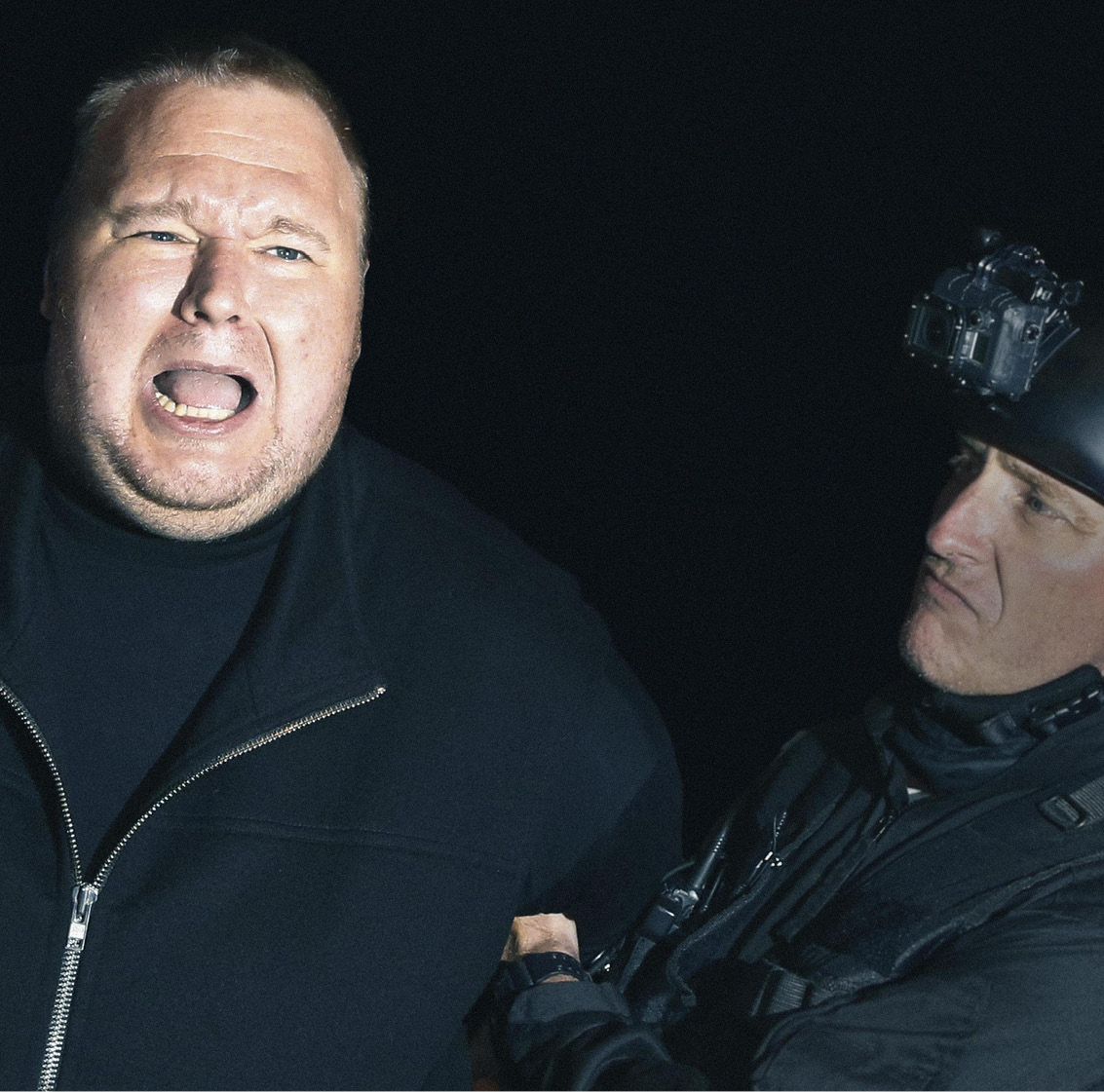
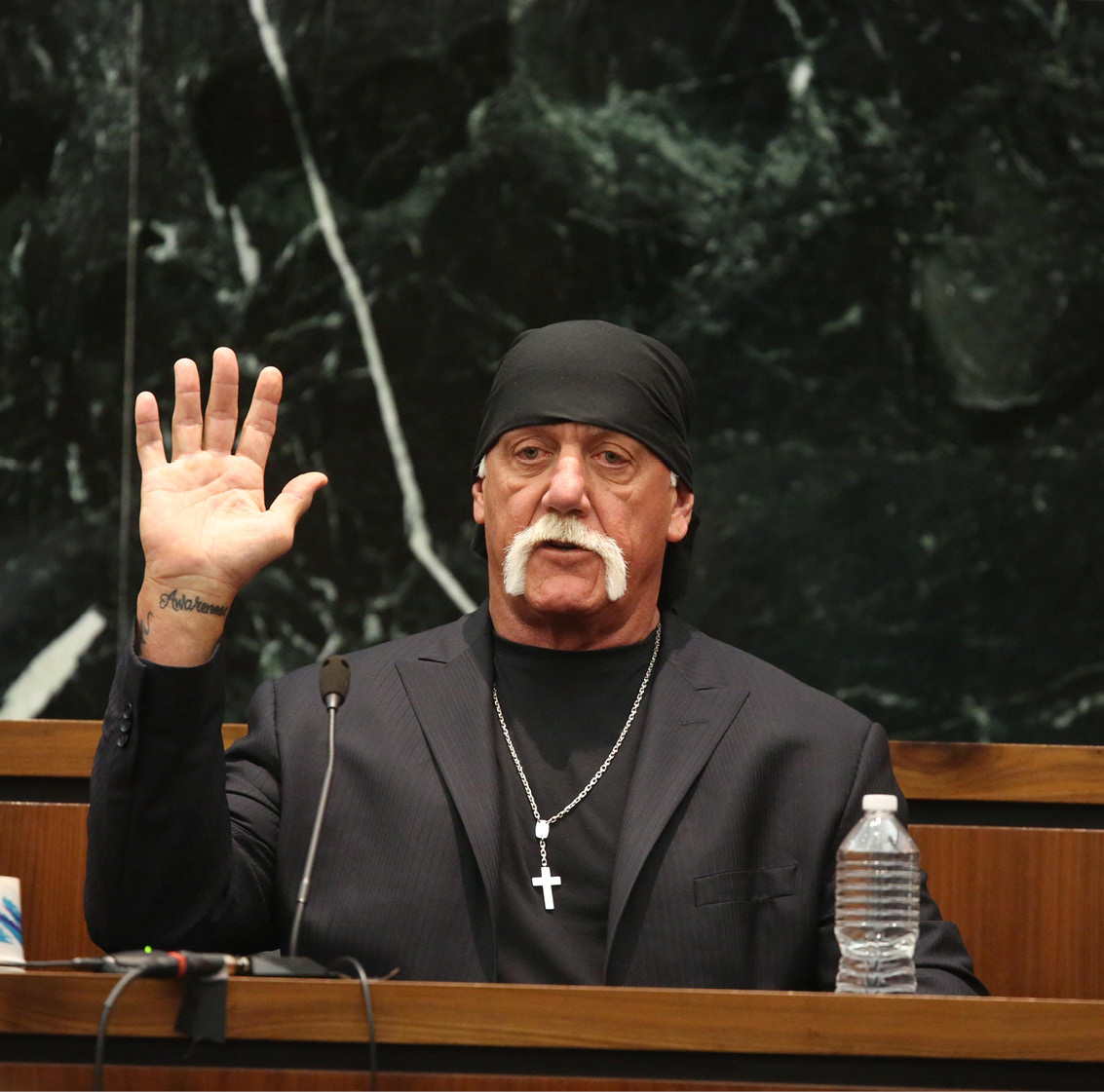
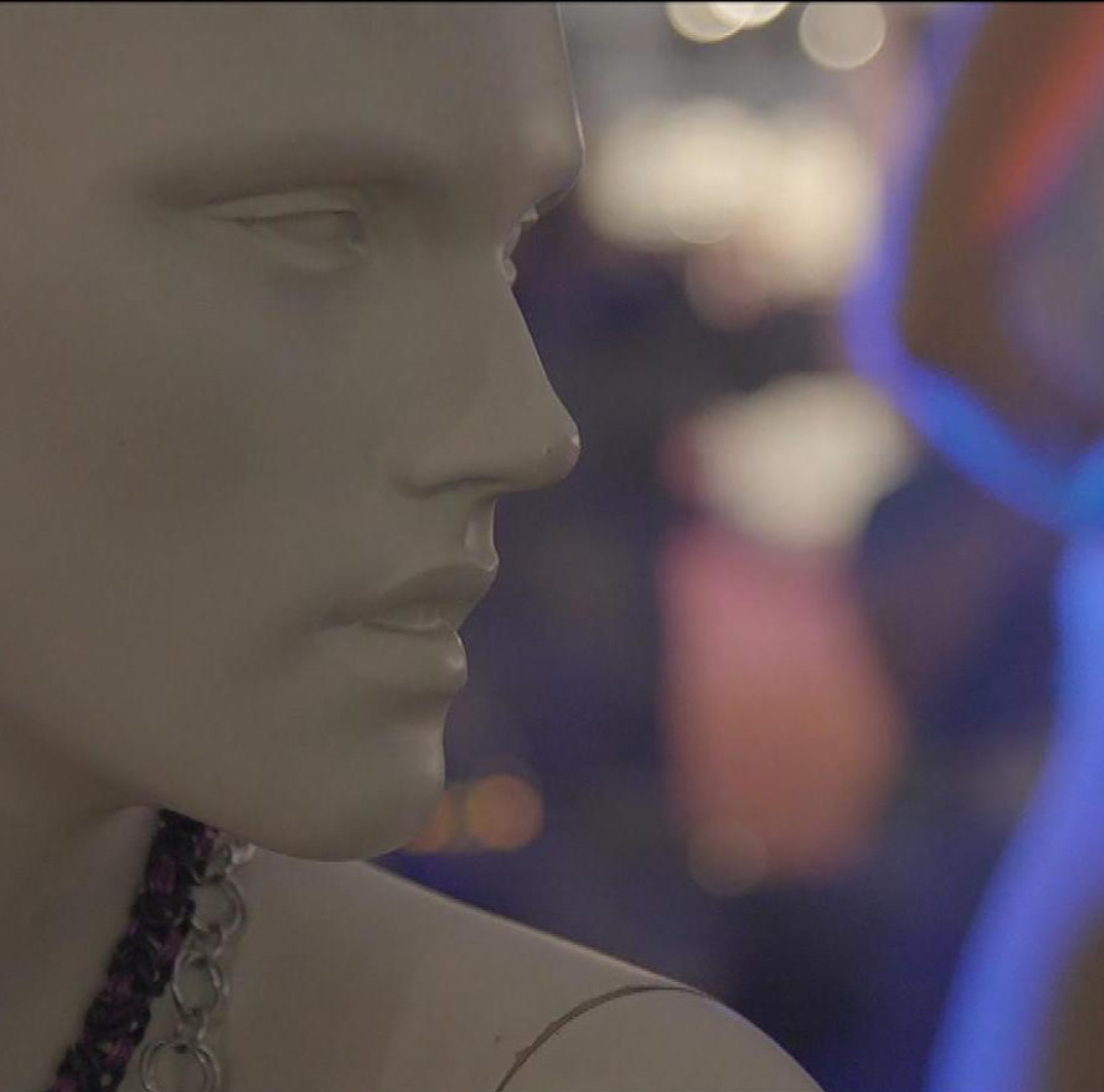
Kim Dotcom Caught in the Web, photo by Nigel Marple
Nobody Speak: Trials of the Free Press, photo by John Pendygraft
Pornocracy: The New Sex Multinationals, photo by Magneto Presse
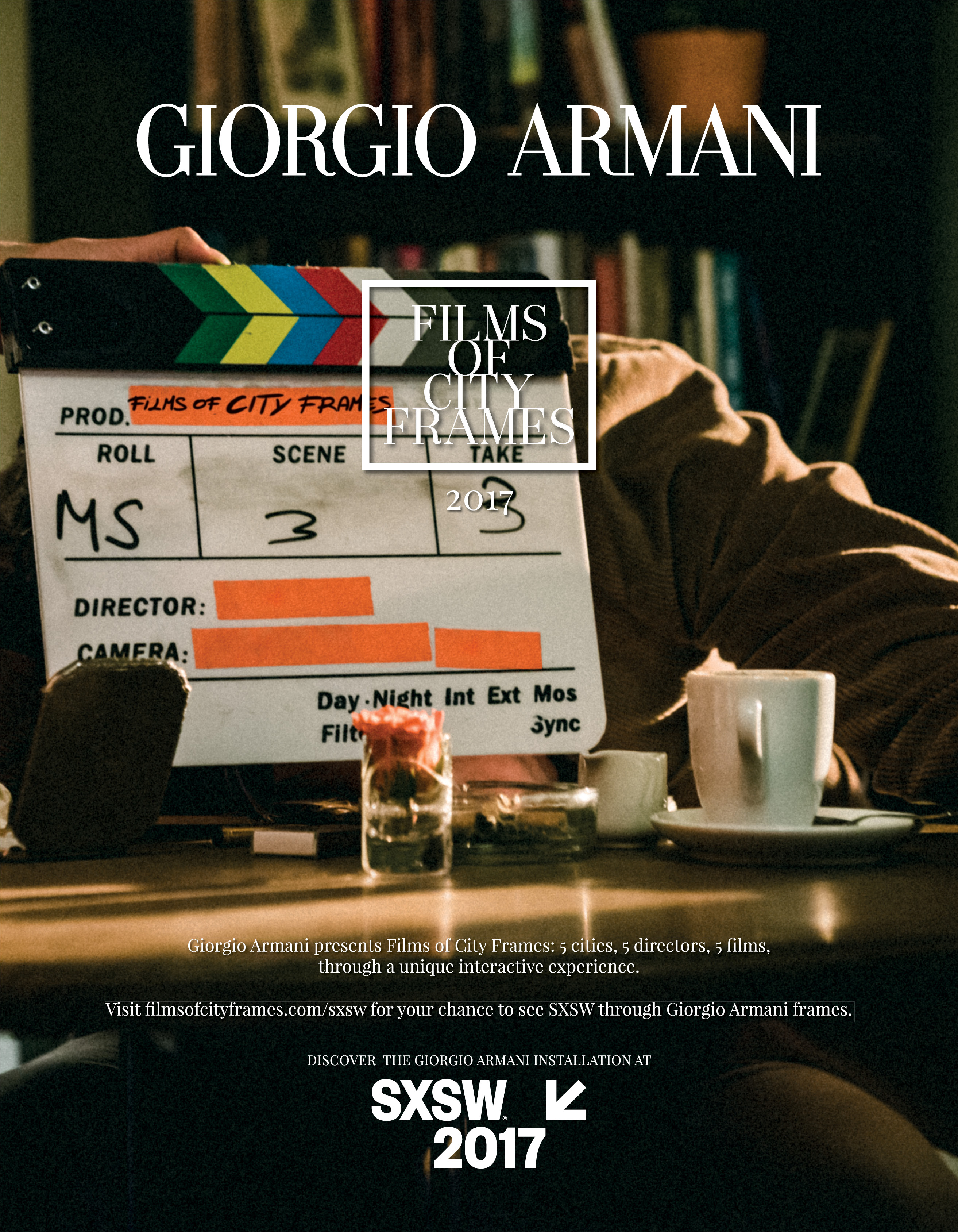
Adam Grant:
Workplace Generosity Pays Off in Personal Joy
By Shermakaye Bass
Grant says that the key for people to find meaning and motivation in their jobs is to tap their innate sense of selflessness. In multiple studies over the past decade-plus, he has repeatedly illustrated that if you engage people by appealing to their sense of generosity, most of the time it pays big dividends.
Consider one study he did as a grad student at the University of Michigan, in which he showed students at a scholarship fundraising call center that their success at the phone bank could truly change another student’s life. The students were often disillusioned by the rude responses on the other end of the phone and were therefore performing dismally, so Grant invited a student to come and speak, giving concrete examples about how his life had dramatically shifted because of those scholarships. Several weeks after the encounter, the study revealed that those same callers had increased their fundraising by 171 percent and spent 142 percent more time in their efforts.
Grant realized in the process that good intentions and altruism at work could be directly linked to increased productivity and success, in general.
Since then, he has continued exploring these motivators through his consulting work, giving his time to students and sharing with the larger world through his books and talks. Those concepts have likewise inspired his most recent research.
“One of the things I’m most fascinated by right now is culture change,” Grant says. “I feel like one of the questions beneath the surface of Originals is how to champion your ideas inside group-think, and a lot of the good examples and data-points I draw are from entrepreneurs and inventors, from people who sort of had an idea for a product or a service or a concept, and more and more I’ve seen people applying these ideas to try to sort of disrupt and evolve the cultures of their organization.
“I really want to understand that better, especially if you’re not the CEO of a company or you’re not at the top of an organization, and you think the culture is not embodying the values that the organization stands for. Or if it’s just not effectively serving the mission, then what do you do about that? And that’s something that I’m starting to tackle now.”
Adam Grant will be an Interactive Keynote speaker tomorrow (Monday, March 13) at 2pm in Ballroom D of the Austin Convention Center. For more programming in the Workplace track at SXSW Interactive,
see workplace.
Adam Grant’s blockbuster books Give and Take: Why Helping Others Drives Our Success and Originals: How Non-Conformists Move the World have both have topped The New York Times Best Sellers List in the past four years. The speaker, teacher and organizational psychologist has also been cast as one of the world’s most generous and original thinkers by Harvard University, the World Economic Forum and several Silicon Valley CEOs, as well as by motivational gurus and his professor colleagues. But most important, Grant says, are his students at the The Wharton School of the University of Pennsylvania.
But how does Grant strike the balance between helping others—through formats as diverse as TedTalks, NGO consulting, scholarly journal writing and startling workplace-motivation studies—while focusing on his own wide work world? Interestingly enough, he admits that he has to now follow his own advice.
“I don’t think it’s my place to judge whether I’m a giver or not. I think that’s in the eye of the beholder,” Grant says. “I can tell you that I chose this as a core (focus) and wrote about it in my first book because it’s a set of values that I hold most dear … I guess one of the things that I had to become clearer on as I’ve become more visible outside the ivory tower, I’ve had to prioritize, actually who am I trying to help, and how?”
In order to continue that line of thinking, after the success of Give and Take, he had to delve further into what motivates and satisfies people at their job, himself included: “I wanted to focus as much as possible on the places where I could have a unique impact, where I was contributing something that wasn’t as easily available by lots of other people that the people asking might have access to.”
Such are the things he tells his students and shares with his readers. At the heart of it is the question: Can one truly be helpful and successful, original and ahead of the curve at work, without losing one’s own sense of private joy? Even though those may seem like incompatible concepts, Grant sees them as totally complementary:
“If you look at people who run large organizations, you are affecting thousands, or hundreds of thousands or sometimes millions of people’s lives, and if you can do something about that, it’s more feasible to make large-scale systematic change to work than it is to their families or their spirituality, and I also think at some level there’s more of a need for it, because there’s a gap between what most people’s work experiences are like.”
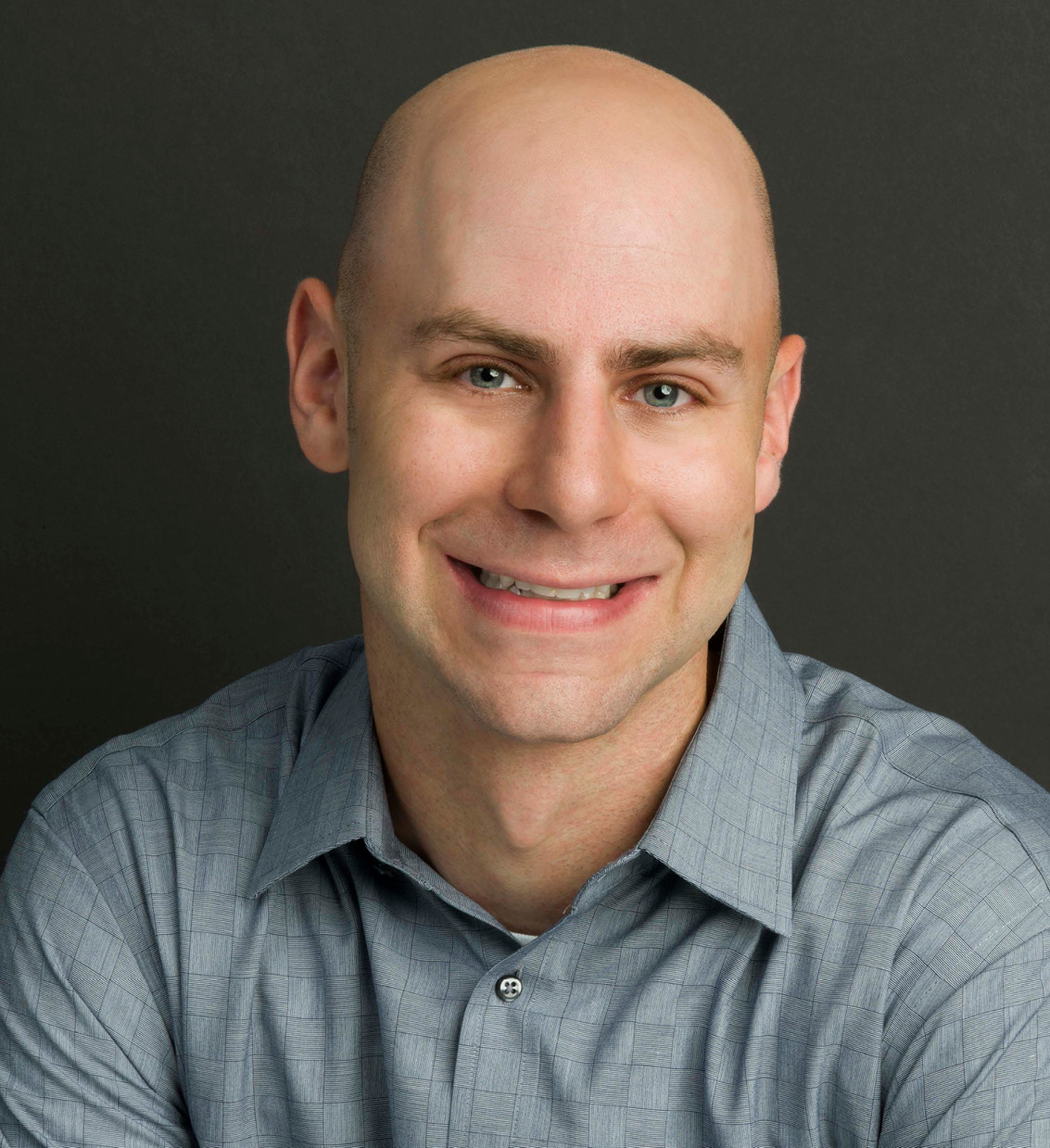
Adam Grant, photo by Lange Studio
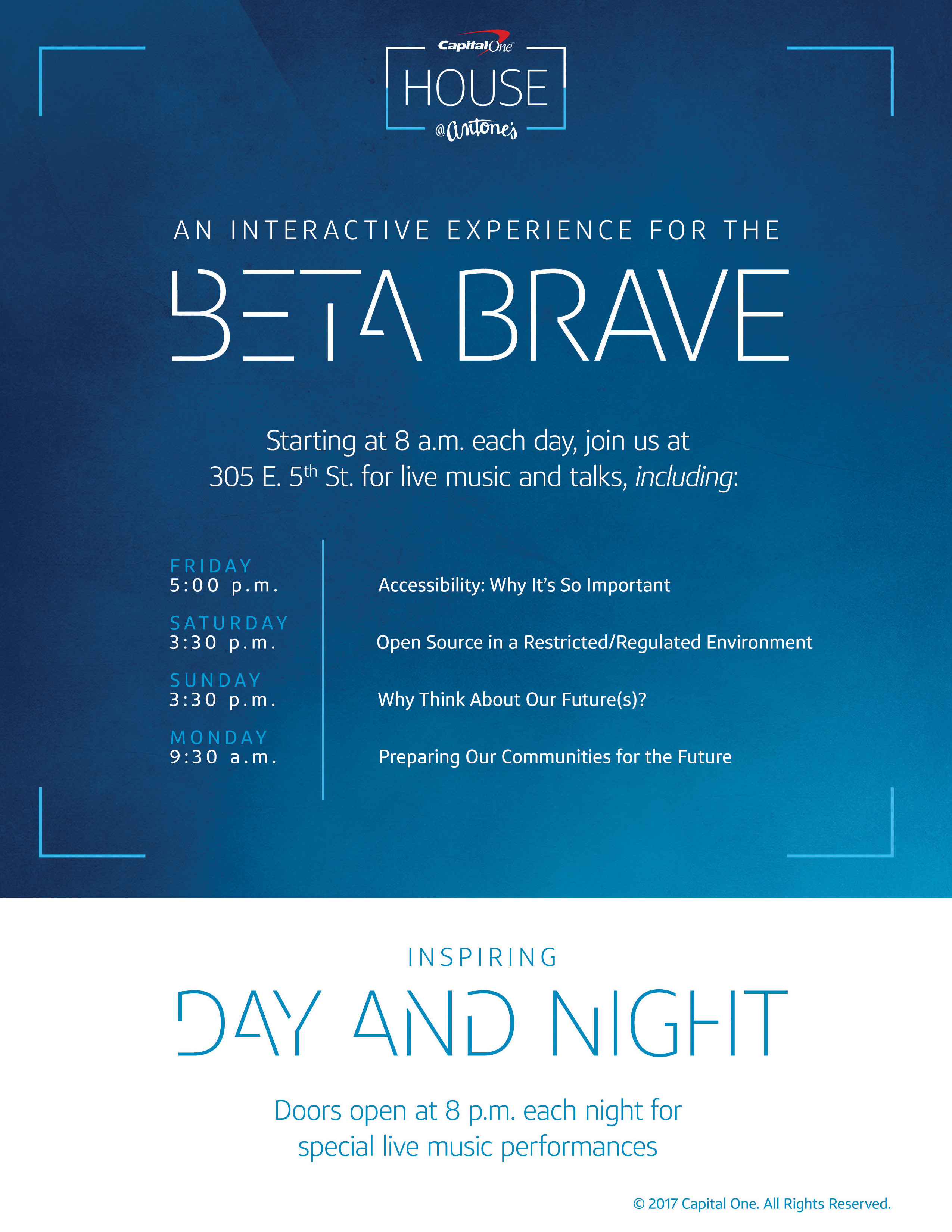
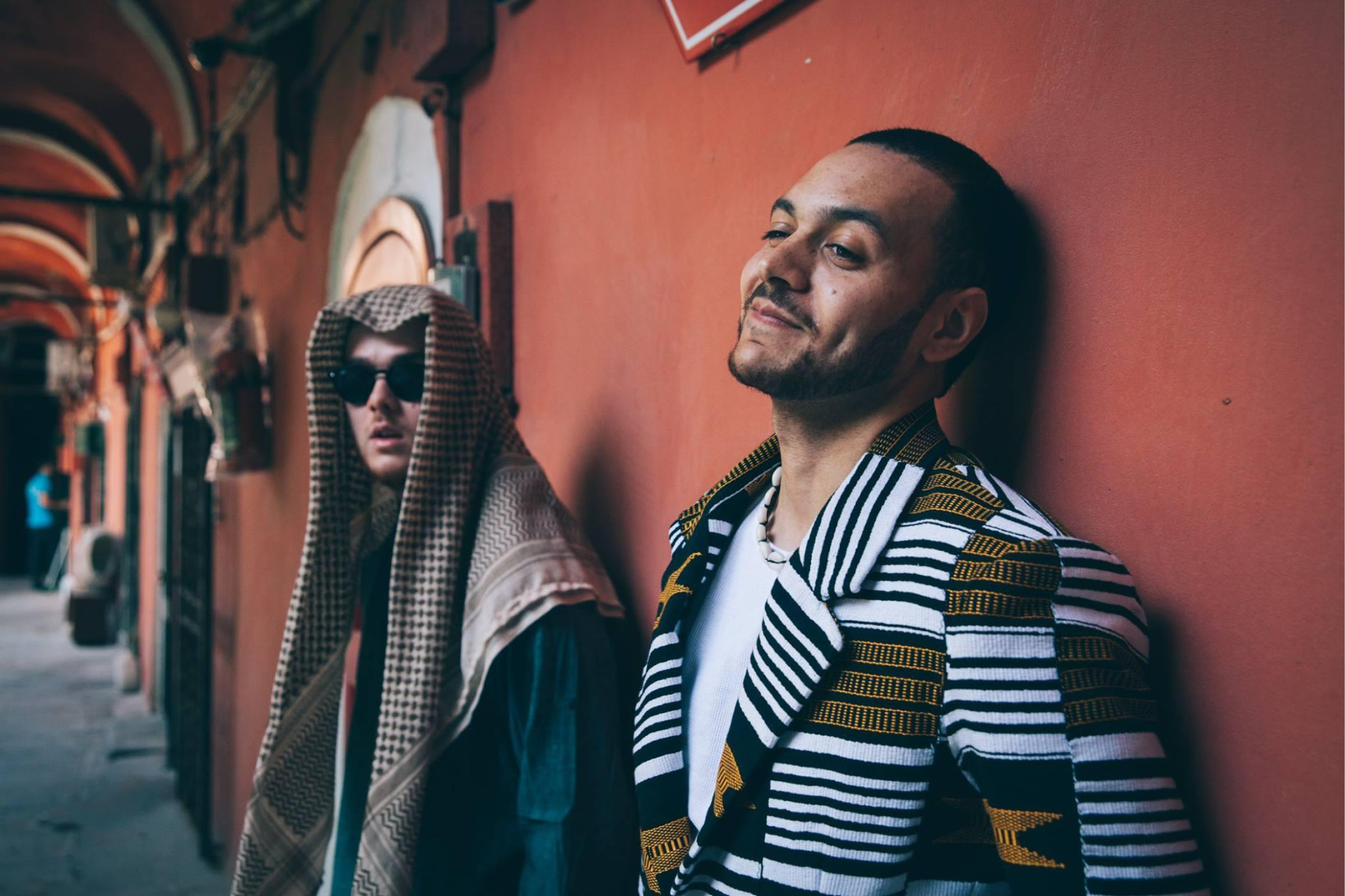
Yussef Kamaal, photo by Larissa Araz
Jazz Refreshed:
Modern Makeover for a Venerable Style
By Jeff McCord
around the globe. The first stop is none other than SXSW, explains McKenzie: “To apply for the International Showcase Grant from Arts Council England, we knew that we needed international showcase experience. Everyone recommended the British Underground.”
The British Underground is now in its 16th year of producing U.K. showcases, with its first show at SXSW in 2002. “We were introduced to Jazz re:freshed, and found that we had a synergy,” says British Underground CEO, Crispin Parry. “This is our first venture into jazz, and to be honest I never really wanted to work in the sector until I met the drummer Moses Boyd and was blown away by him and his music.”
South London’s Boyd is an impressive talent who has already racked up a handful of prestigious awards. Fueled by a Tony Williams-styled, lighter-than-air kineticism, he has the confidence to perform in all kind of settings, from solo to duo to the larger ensemble Moses Boyd Exodus, appearing at SXSW, and in the U.S., for the first time. “It’s been a dream of mine to make it out there,” Boyd says. “So it’s all a bit surreal.”
“There are names who are generating serious international interest right now,” says McKenzie. “And we simply could not leave them at home.”
Yussef Kamaal is a duo made up of Yussef Dayes and Kamaal Williams. The pair set largely improvised grooves to a glitchy fusion that conjures shades of electric Miles. Like Boyd, their music quickly caught the attention of U.K. tastemaker Gilles Peterson, who signed them to his label. The duo will be joined by at SXSW by another rising star, saxophonist Shabaka Hutchings.
Rounding out the British Underground Jazz re:freshed’s SXSW showcase lineup is the eclectic group Native Dancer; the mix of Afro-beat grooves and Sun Ra-like eclecticism of United Vibrations; the Indian percussionist Strathy Knower, whose electronic global mash induces a hypnotic power; and the Manchester-based piano trio GoGo Penguin, who had their 2016 debut (released on Blue Note Records) nominated for a Mercury Prize.
“I think on all levels, from media and TV to radio and festivals, we need to shed the misconceptions of what people think ‘jazz’ looks like, and sounds like and instead present a reflection of its current diversity,” says Boyd. “I feel the more exposure we get of the music being made right now will help destroy these ideas of what people assume jazz is and ultimately open up people’s receptiveness to it. I believe there’s something in it for everyone.”
The British Underground/Jazz re:freshed showcase is on Wednesday, March 15 at The Main II (603 Red River St). For all music showcase info, check the SXSW GO app or schedule.
Jazz at South by Southwest? Is that even a thing? SXSW may not be overrun with jazz music, but each year artists make the trek to Austin, from crossover stars like Norah Jones, Jamie Cullum or Tony Bennett to up and comers such as Snarky Puppy, BADBADNOTGOOD and Marco Benevento. Austin vocalist Kat Edmonson’s festival appearances helped jumpstart her career, and established artists including Stanley Jordan, Jason Moran, Nik Bartsch, Terence Blanchard, Robert Glasper, Joe Lovano, Matthew Shipp and William Parker have appeared over the years. New York’s the Jazz Passengers even once showed up with Debbie Harry as their vocalist.
Still, the jazz represented at SXSW has not risen above the proportions of the genre’s small overall market share. The downturn in record sales over the past decade-plus hit jazz artists particularly hard, shrinking their already slim profit margins. Many jazz musicians, even veteran stars, are recording less frequently than before.
In the swing era, jazz was America’s popular music, but the seriousness of the bebop era, reflected in great artists like Miles Davis and Charlie Parker, has only intensified and shrouded the music in an elitist cloud. Sidelined for so long, few uninitiated fans have seemed to show much interest. Yet, saying you don’t like jazz is akin to stating you don’t like food, with its endless variety of flavors—especially today.
Genre-bending is all the rage. Rappers, DJs, electronic musicians, soul singers and jazz musicians intertwine on a regular basis and are expanding their visions by adding new elements, and new listeners. Examples include young artists like Thundercat, Flying Lotus and Kendrick Lamar collaborating with the likes of Kamasi Washington and Herbie Hancock.
Leading this revolution in the U.K. is an organization called Jazz re:freshed, founded in 2003. Creative Director Justin McKenzie explains: ”Within the first few months of what was a weekly DJ residency, we had introduced the live aspect to the night and our aims became more pointed. We realized our purpose was to challenge the most commonly held conceptions about what jazz music is ... who’s making it, and who’s listening to it.”
So who is listening? According to McKenzie, “There is a tangible cohesive movement at the moment, given energy by a young vanguard of musicians not afraid to infuse their jazz with inspiration and influences from all spheres; grime, hip-hop, punk, jazz fusion, rare grooves, etc., and that is bringing together a once fragmented scene.”
Jazz re:freshed’s success has led to the launch of a two-year undertaking, displaying the new breed of U.K. jazz at festivals and mini-tours
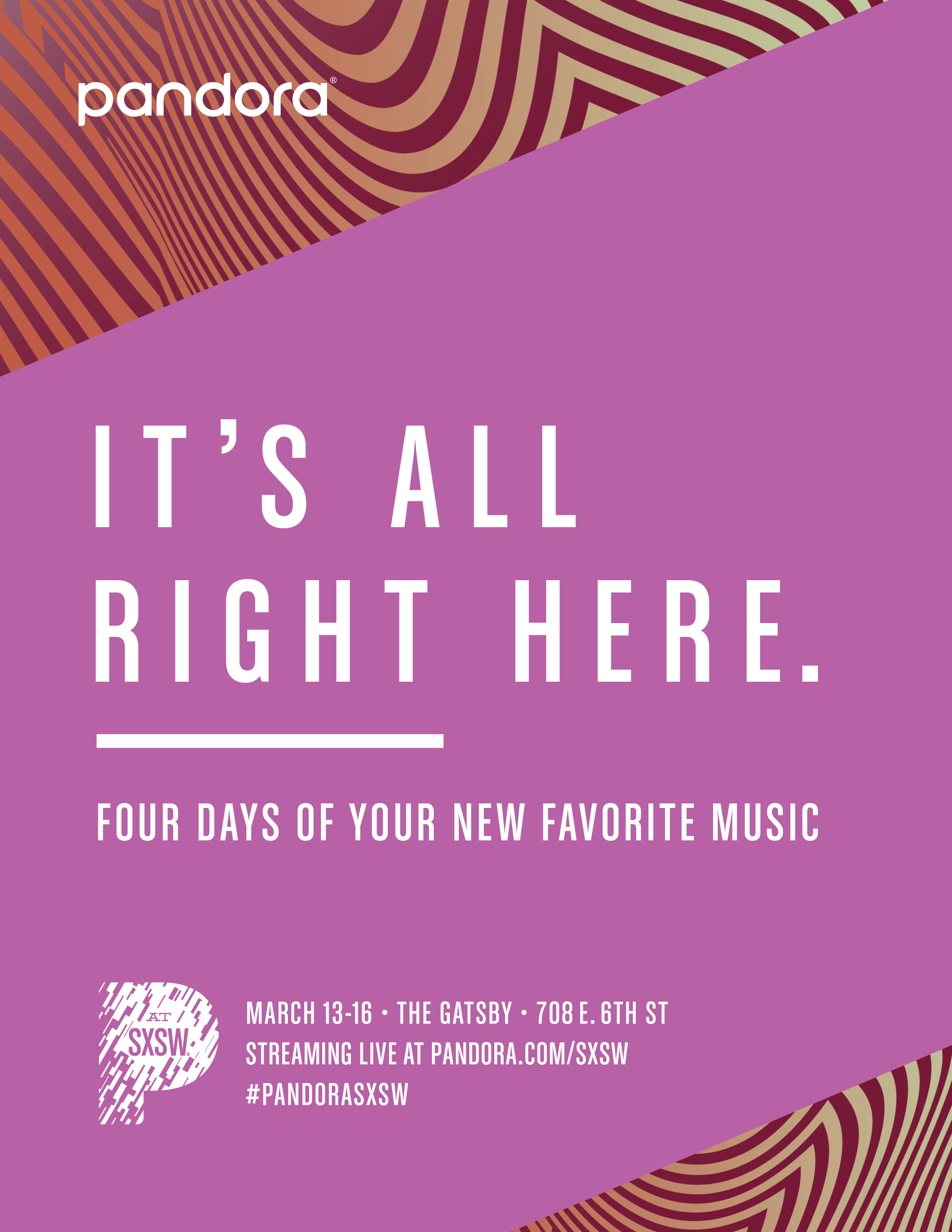
While Springdale is subject to the mercy of Mother Nature (the farm lost 75% of its 2016 tomato crops due to flooding), AeroFarms seems to have a omnipotent view of everything happening on the farm. By collecting up to one million data points per day on its beds of kale, operators can optimize growing conditions for maximum efficiency. However, none of that matters if the bottom line doesn’t add up to profit. The large initial investment required for food technology companies like AeroFarms means that the ramp to profitability is long and steep.
Investors like Brian Frank of FTW Ventures (also a SXSW panelist) have taken hard looks at trends like vertical farming, from large-scale businesses like AeroFarms to more boutique operations such as Kimbal Musk’s Square Roots, an agriculture accelerator that helps farmers develop indoor systems in freight containers. Food chains need disrupting, and there’s plenty of money to be made, but Frank questions any operation with such a high input cost and cheap output product.
“They have to invest in lighting, HVAC, electricity … all these things cost money. You have to recoup that cost over a period of time. My fear is that the payback on those is really, really long,” says Frank. Taking electricity out of the budget by adopting a greenhouse model brings the equation closer to profitability, but it also opens a set of variables that can wrench an operation like AeroFarms’ data-mining. Even so, it’s hard for Frank to go all-in on a product like leafy greens when there are much more profitable herb industries on the rise (such as legalized cannabis).
Profitability is obviously a huge goal, but agriculture isn’t necessarily a gold digger’s market. Another Austin operation striving to raise produce IQs is Get Well Farms, which is in the process of building a greenhouse incubator to produce thousands of seedlings for distribution to schools and community gardens. For Get Well, the most important agricultural issue isn’t a lack of usable farmland or efficiency, but keeping the next generation connected to the soil.
“The kid that never gets to take a trip to a farm, they’re so separated from the earth, they’ll never understand,” says Get Well operational director Sean “Peppy” Meyer.
Similarly, operations like Springdale Farms and AeroFarms, even if their methods are different, both hope that by bringing food systems closer to consumers, they are encouraging eaters to become more educated and involved with what ends up on their plates.
So even if the future of agriculture might live 10 stories high, it will still start at ground level.
Food is one of the Convergence tracks at SXSW, open to all SXSW badgeholders. The full list of programming here food.
Soil is the last thing that comes to mind when most people think about technology, but innovation in our farming supply chains is crucial to keeping up with demand for fresh food in an ever-changing world. According to disruptive agriculture companies like AeroFarms, the direction of that innovation is upwards.
Founded in 2004 and headquartered in New Jersey, AeroFarms recently unveiled the world’s largest indoor vertical farm in a 70,000 square foot space in a former steel mill. Its processes were developed as an offshoot of aquaculture, in which the plants grow out of a cloth-based medium instead of water and don’t require soil or sunlight. A steady mist keeps them hydrated with 95% less water than a traditional outdoor farm. Leafy greens and herbs are the main products, and thanks to a data-obsessed approach, AeroFarms is able increase the productivity per square foot by 130 times what you’d find in the field.
Yet, although these are hard numbers to argue with, vertical farming is still a concept that doesn’t sit easily with many people. “There’s a fear of Big Agriculture. When people hear technology, they think, is this engineered food?” says Marc Oshima, AeroFarms co-founder and Chief Marketing Officer (his colleague David Rosenberg is a SXSW panelist). “But this is about how to harness technology to deliver a better product. Better flavor, better nutrition … it’s by the community for the community.”
The approach has the potential to bring fresh and affordable produce to food deserts like the city of Newark, but the idea of a warehouse full of grow lights couldn’t be further from the reality of many urban farms that aim to achieve the same goals. Springdale Farm on Austin, Texas’ east side is both a shining and cautionary example of a community agriculture operation. The farm’s five acres grow over 75 vegetable varieties, sold direct to restaurant chefs and consumers via a twice-weekly farm stand. Doubling as everything from a wedding venue to food truck site helps supplement the farm’s income and endears Springdale Farm to the community, which hasn’t always been welcoming. Gentrification accusations from neighbors led to a long battle with the city, just one of the many challenges of fitting a kale-shaped peg into a baby carrot-sized hole.
The main difference between an operation like AeroFarms and Springdale isn’t necessarily technology, but control. “If you’re farming like we do, you somehow have this riverboat gambler mentality,” says Springdale Farms’ co-owner Glenn Foore. “All the data we have ... it’s still a dice roll a lot of the time. You’re always fighting these highs and lows. Freezing temperature, severe droughts. We’re challenged every day when we step out the door.”


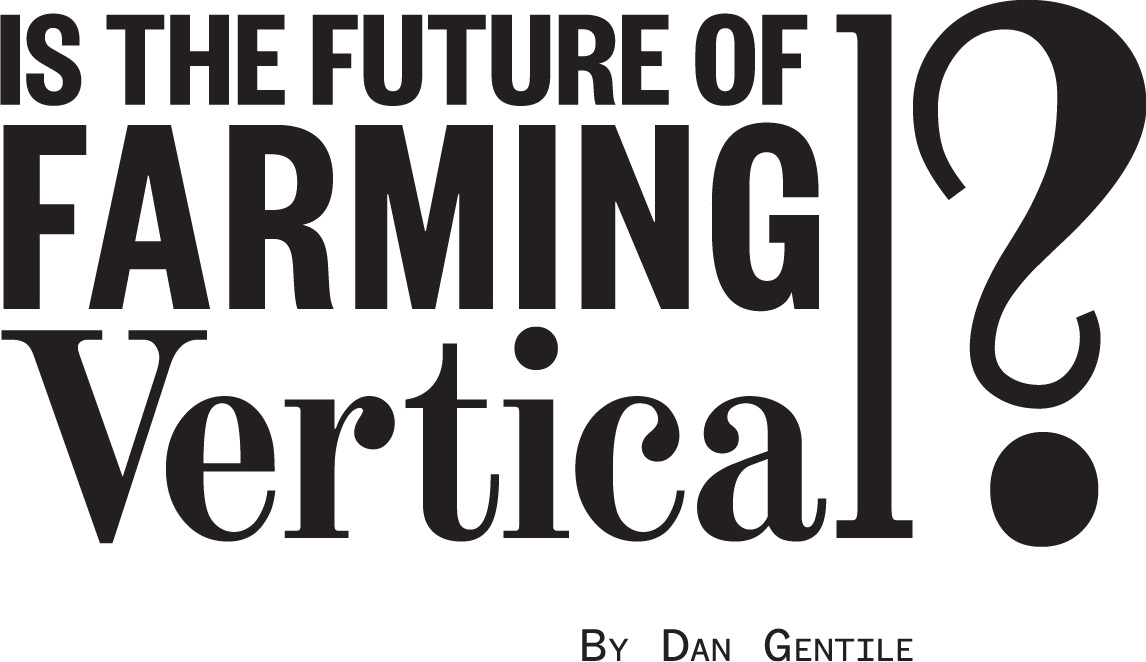

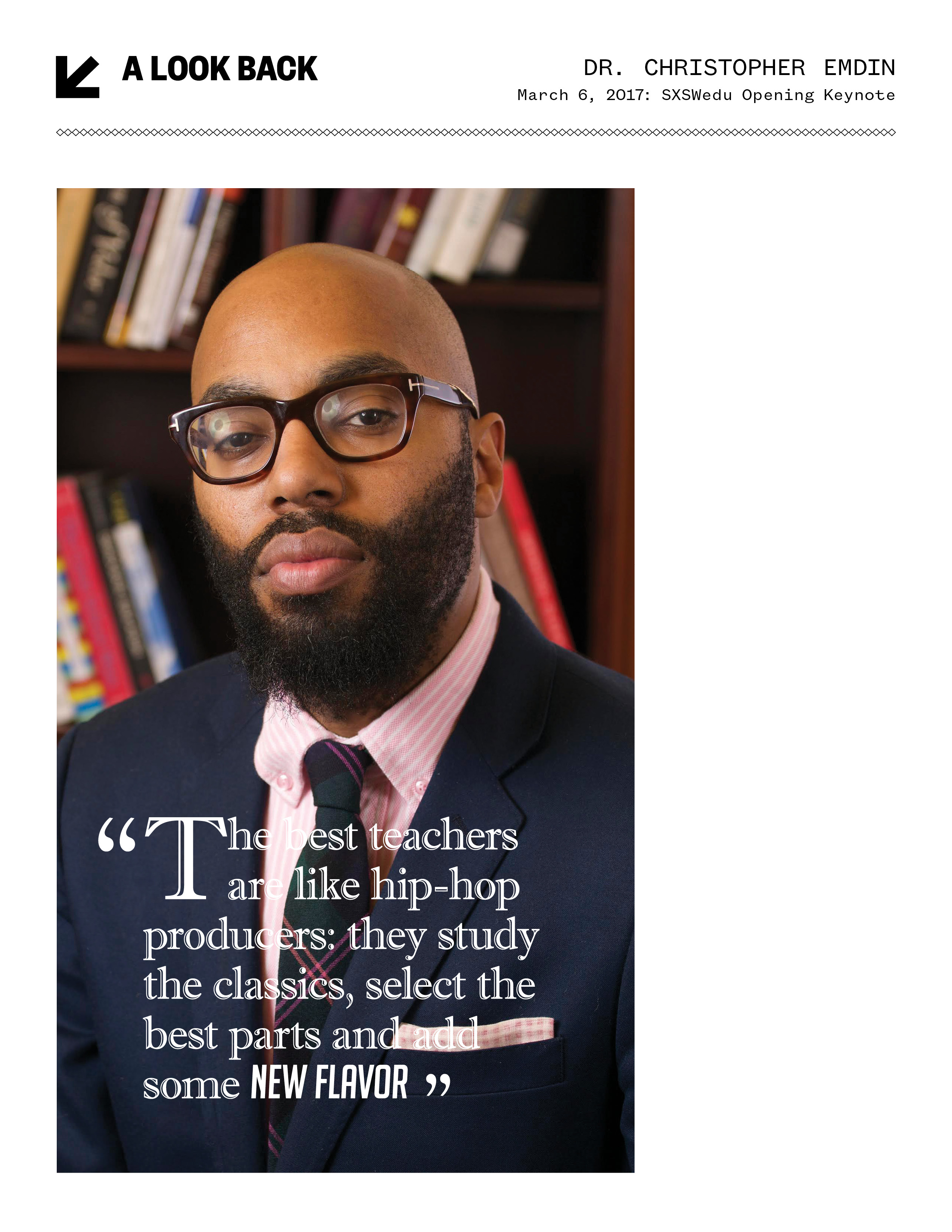
Dr. Christopher Emdin is an Associate Professor in the Department of Mathematics, Science and Technology at Teachers College, Columbia University; where he also serves as Director of Science Education at the Center for Health Equity and Urban Science Education.
Dr. Emdin is a social critic, public intellectual and science advocate whose commentary on issues of race, culture, inequality and education have appeared in dozens of influential periodicals including The New York Times, Wall Street Journal, Washington Post and most recently, his New York Times Best Seller: For White Folks Who Teach in the Hood..and the Rest of Y’all Too: Reality Pedagogy and Urban Education.
